Water conservation has become a pressing concern for homeowners across the country as climate patterns shift and water costs continue to rise. Creating a beautiful yard that thrives with minimal water doesn't mean sacrificing visual appeal or functionality. Drought tolerant landscaping offers an exciting opportunity to design stunning outdoor spaces that work with nature instead of against it. These water-wise approaches can reduce your outdoor water usage by up to 80% while providing year-round beauty and supporting local wildlife. From vibrant succulent gardens to flowing ornamental grasses, drought tolerant designs embrace plants that have naturally adapted to survive dry conditions. Smart landscaping choices like native plants, efficient irrigation systems, and strategic hardscaping create outdoor environments that flourish during dry spells and look magnificent throughout the seasons.
1. Xeriscaping with Native Plants
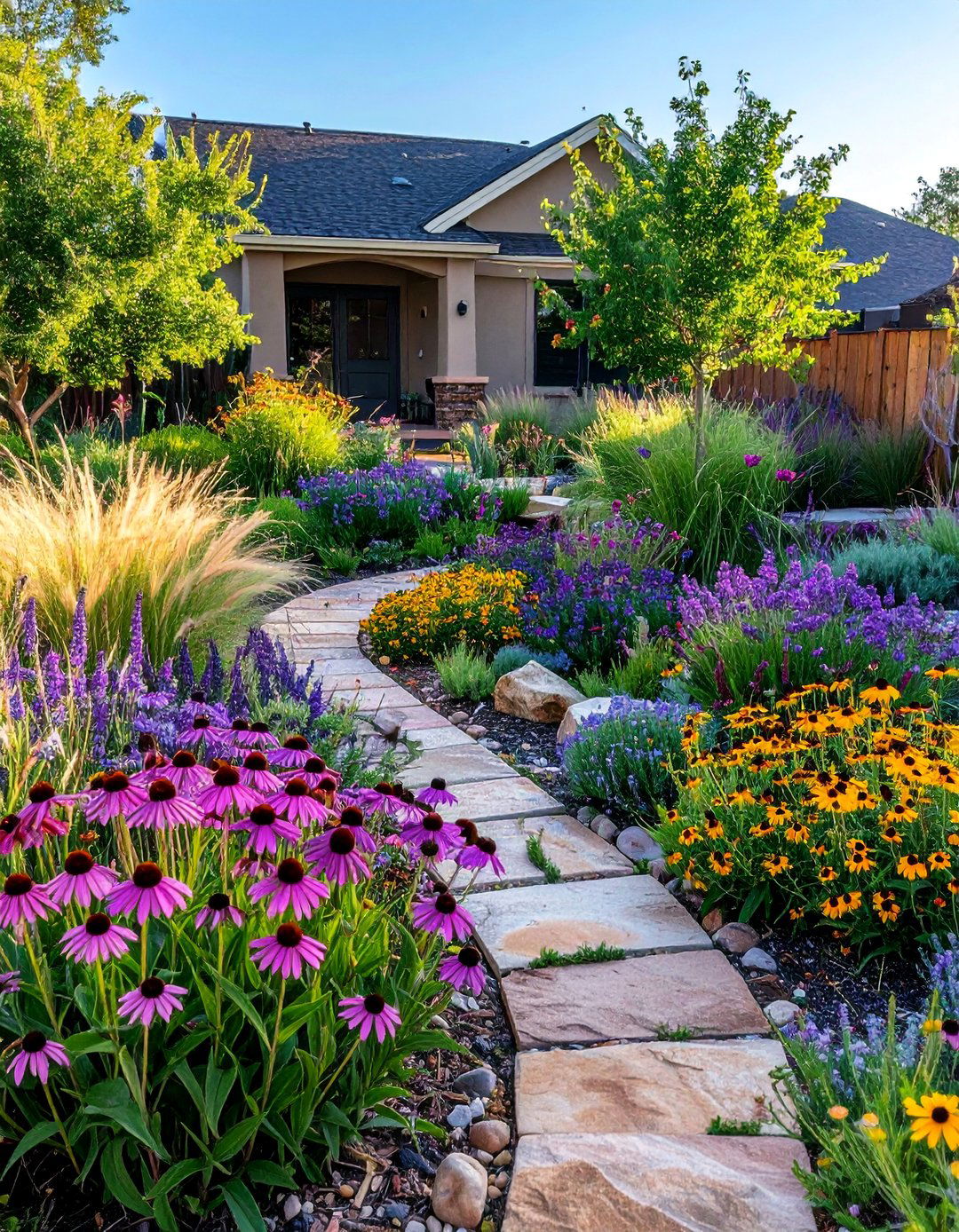
Are you ready to transform your yard into a water-wise paradise? Xeriscaping combines native plants that naturally thrive in your local climate with strategic design principles to create landscapes that survive on rainfall alone. This approach groups plants by their water needs, reduces lawn areas, and uses mulch to retain soil moisture. Native wildflowers like purple coneflower and black-eyed Susan provide vibrant colors while requiring minimal care. Ornamental grasses such as buffalo grass and blue grama add texture and movement. The key lies in selecting plants that have spent centuries adapting to your specific region's rainfall patterns and soil conditions. Once established, these hardy natives develop deep root systems that access groundwater, making them incredibly resilient during extended dry periods.
2. Succulent Rock Gardens
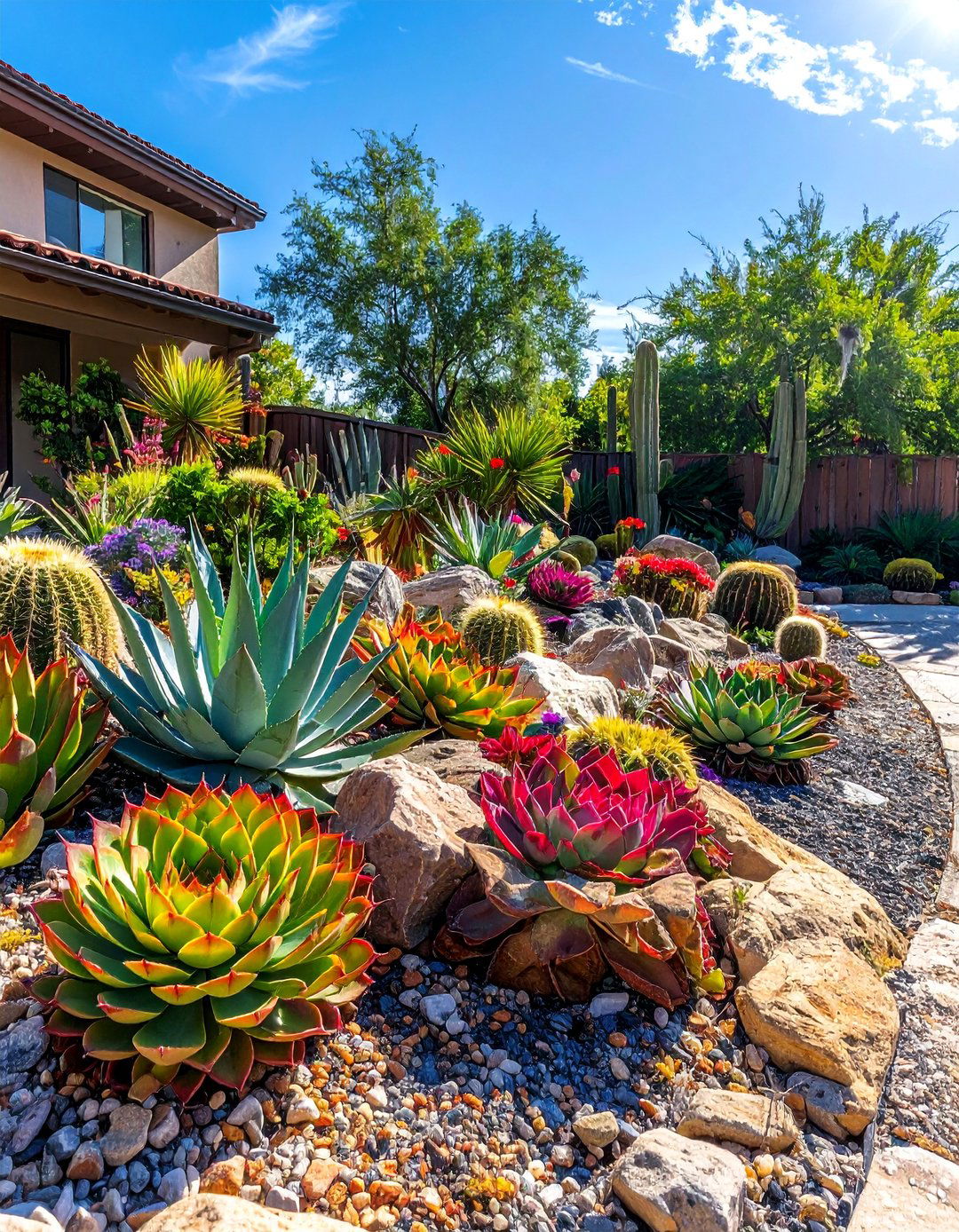
What could be more striking than a sculptural garden filled with plants that store water in their thick, fleshy leaves? Succulent rock gardens combine the architectural beauty of agaves, echeverias, and sedums with natural stone elements to create dramatic focal points. These plants come in an amazing variety of colors, from silvery blue to deep purple and vibrant red. Arrange different sized rocks and boulders to create natural-looking crevices where succulents can nestle and spread. The contrast between smooth stones and textured plant forms creates visual interest that changes throughout the day as shadows shift. This low-maintenance approach requires excellent drainage, so consider building raised beds or mounded areas that prevent water from pooling around plant roots.
3. Mediterranean Herb Gardens
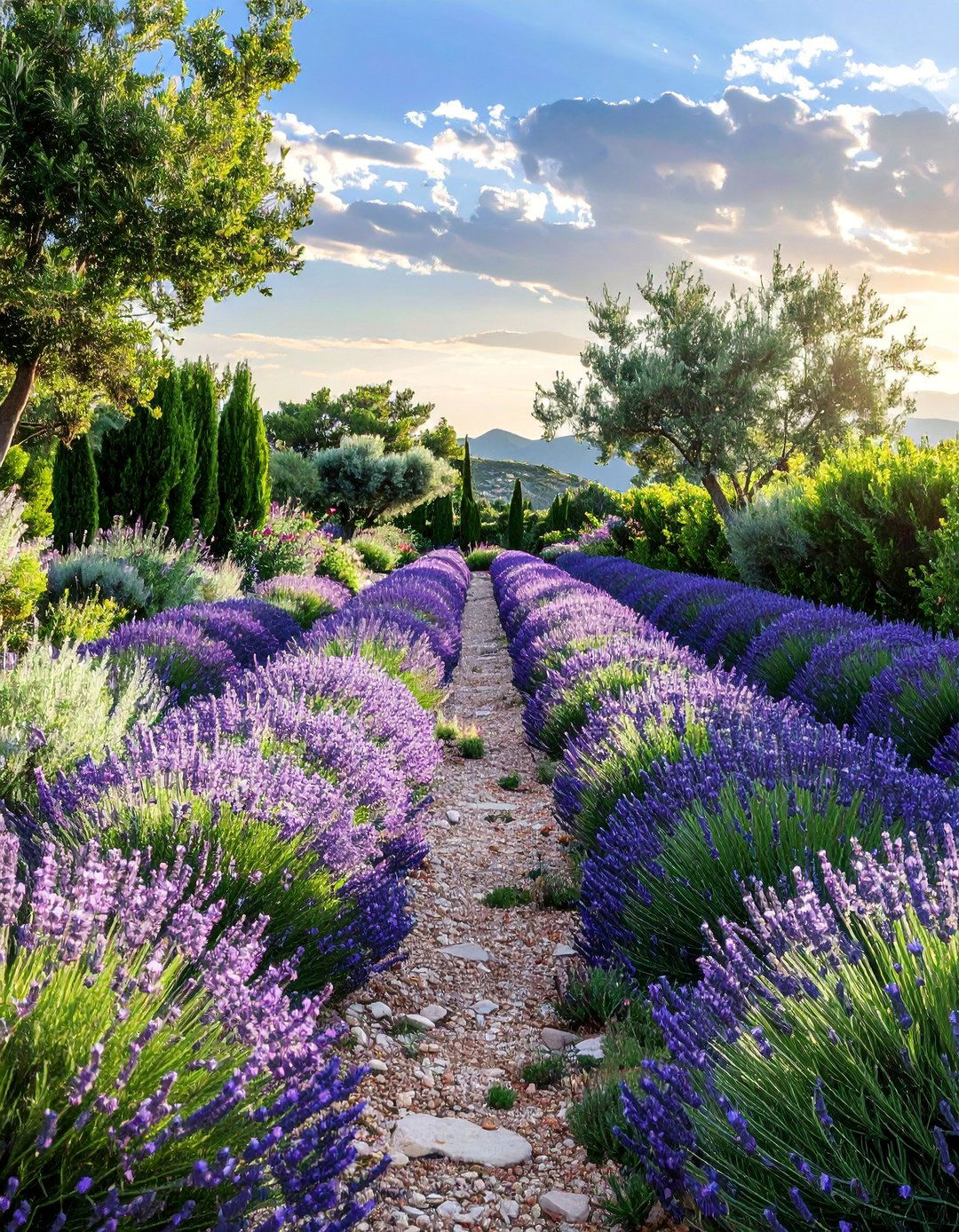
Can you imagine stepping into your backyard and being greeted by the intoxicating scents of lavender, rosemary, and thyme? Mediterranean herb gardens bring the charm of Southern Europe to your landscape while providing drought tolerance and culinary benefits. These sun-loving plants have silvery or grey-green foliage that reflects heat and conserves moisture. Plant them along pathways where their fragrances will be released when brushed against. Combine different textures by mixing fine-leaved herbs like oregano with broader plants like sage. The bonus of this approach is having fresh herbs steps away from your kitchen. Many Mediterranean herbs actually perform better in poor, well-draining soil than in rich garden beds, making them perfect for challenging locations.
4. Ornamental Grass Meadows
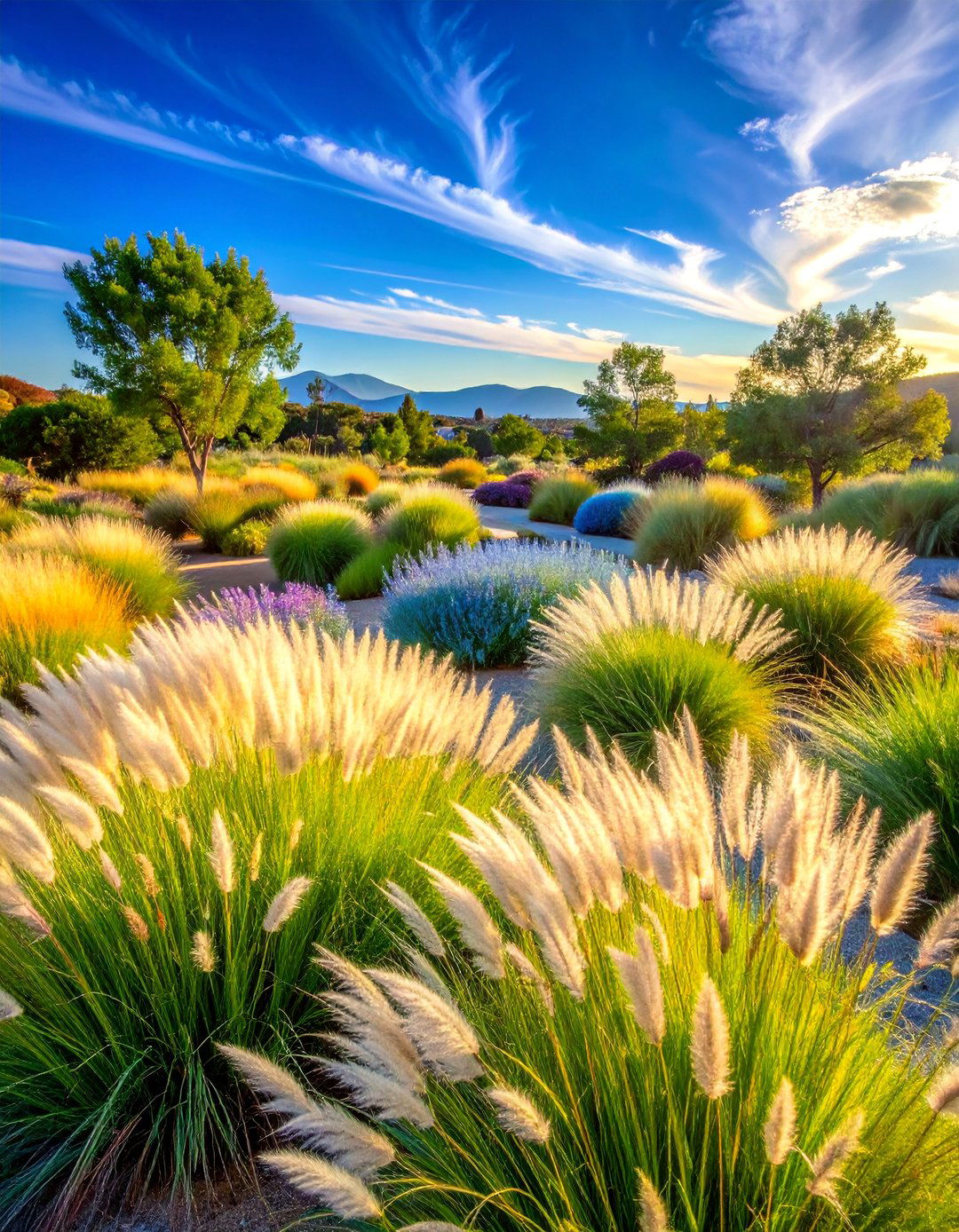
Have you ever watched tall grasses sway gracefully in the breeze and felt instantly relaxed? Ornamental grass meadows capture this peaceful quality while providing excellent drought tolerance and habitat for wildlife. Mix different grass heights and textures to create natural-looking compositions that change dramatically with the seasons. Fountain grass provides elegant arching forms, while upright varieties like feather reed grass add vertical structure. These grasses develop extensive root systems that prevent erosion and require virtually no water once established. Many produce attractive seed heads that feed birds through winter months. The gentle rustling sounds and movement create a sensory experience that brings life to static garden spaces.
5. Permeable Hardscaping Pathways
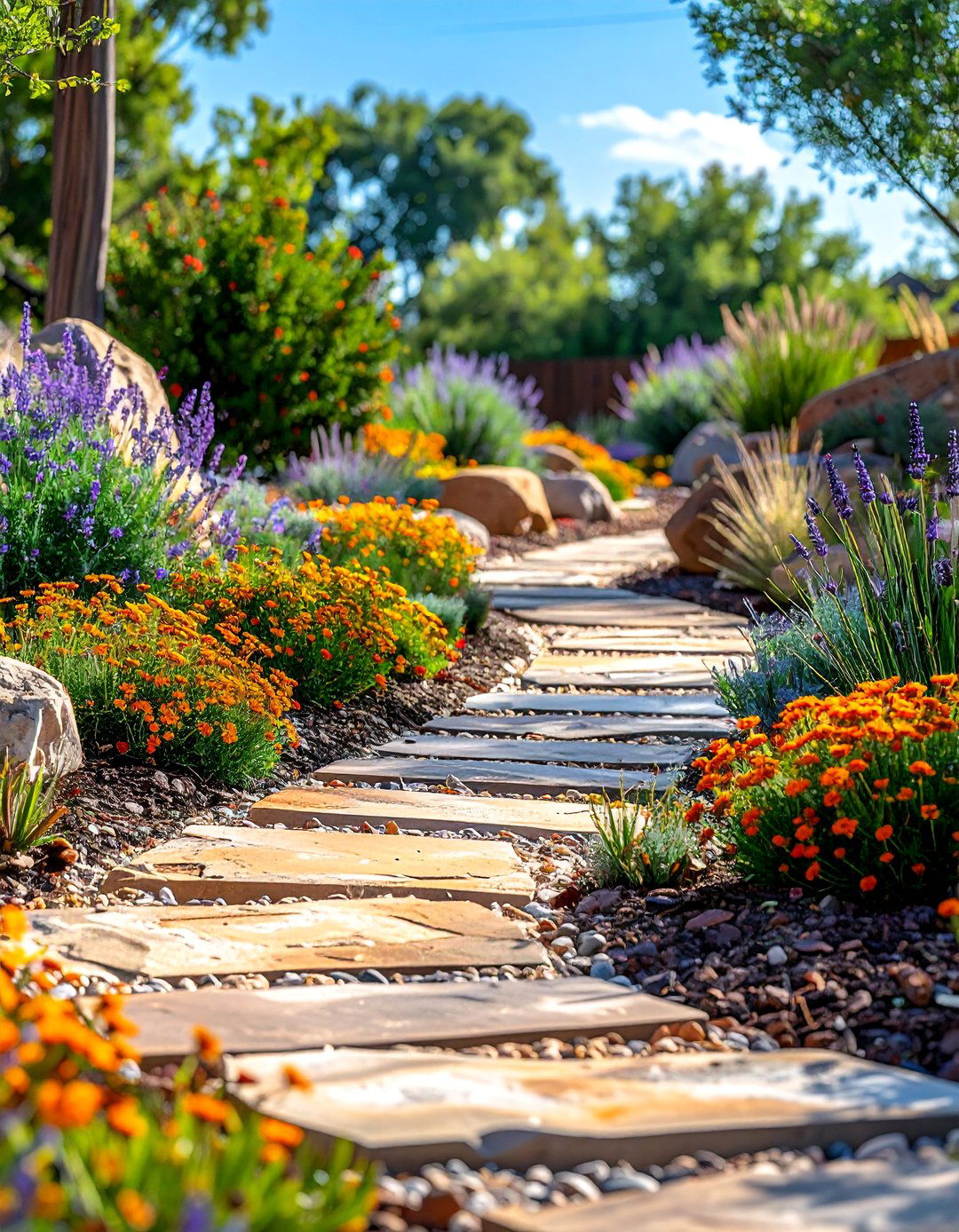
Why choose between beautiful walkways and water conservation when you can have both? Permeable hardscaping uses materials like gravel, stepping stones, and porous pavers that allow rainwater to infiltrate the soil instead of running off. These pathways reduce stormwater runoff while creating attractive circulation routes through your landscape. Decomposed granite provides a natural, soft surface that complements drought-tolerant plantings. Flagstone stepping stones surrounded by drought-tolerant ground covers like thyme create charming garden paths. The spaces between hardscape elements can be filled with water-wise plants that soften the overall appearance. This approach combines functionality with environmental responsibility while adding structure to informal planting areas.
6. Rain Gardens and Bioswales
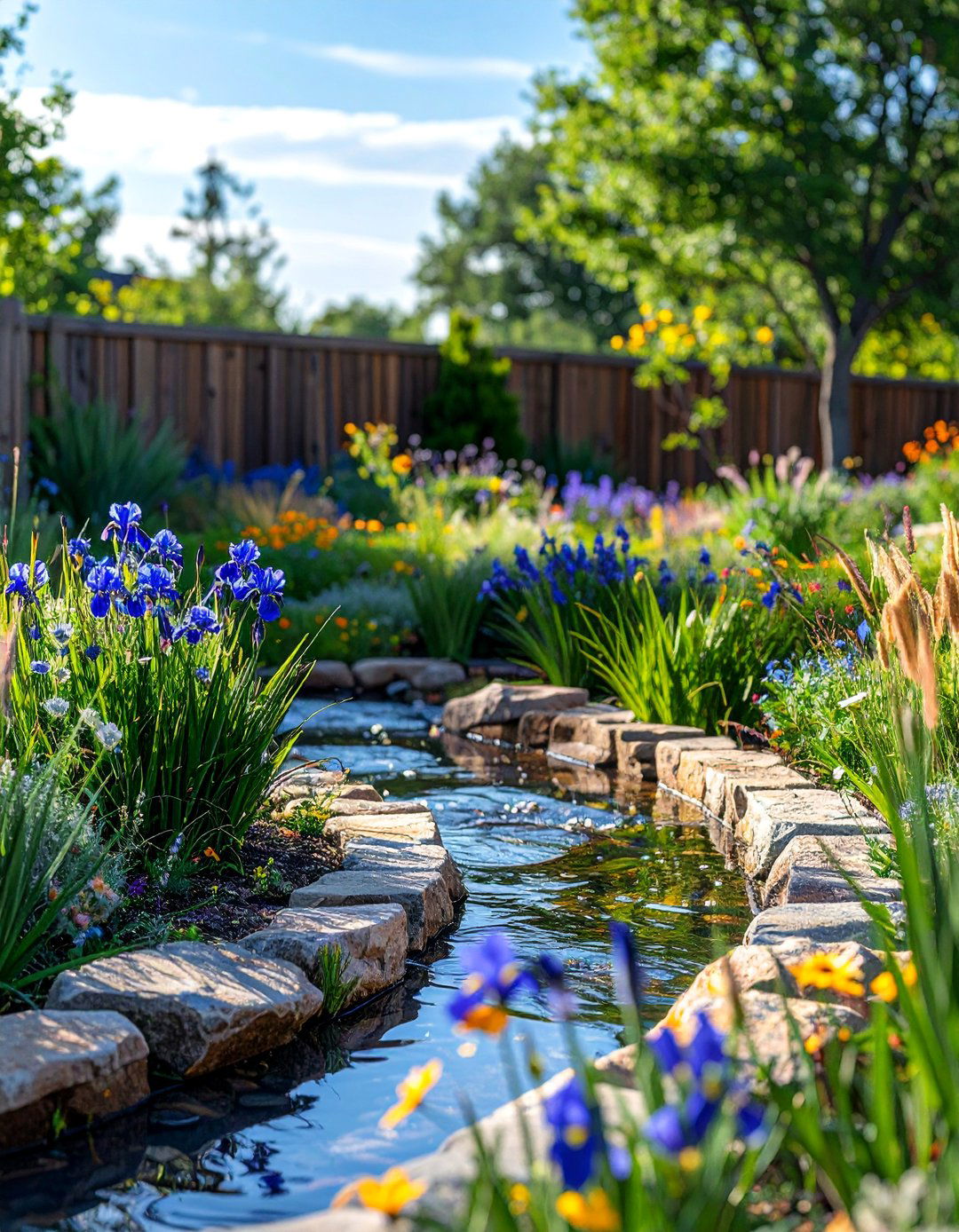
Do you want to turn a problem area into a beautiful landscape feature? Rain gardens capture and filter stormwater runoff from roofs, driveways, and other impervious surfaces while showcasing plants that tolerate both wet and dry conditions. These shallow depressions are planted with native species that can handle periodic flooding followed by drought periods. Switch grass, blue flag iris, and cardinal flower thrive in these fluctuating conditions. The plants' deep roots help water infiltrate slowly into the ground rather than rushing into storm drains. Rain gardens reduce flooding, filter pollutants, and create habitat for beneficial insects and birds. They demonstrate how functional landscapes can be both environmentally beneficial and visually appealing.
7. Desert-Style Landscape Design
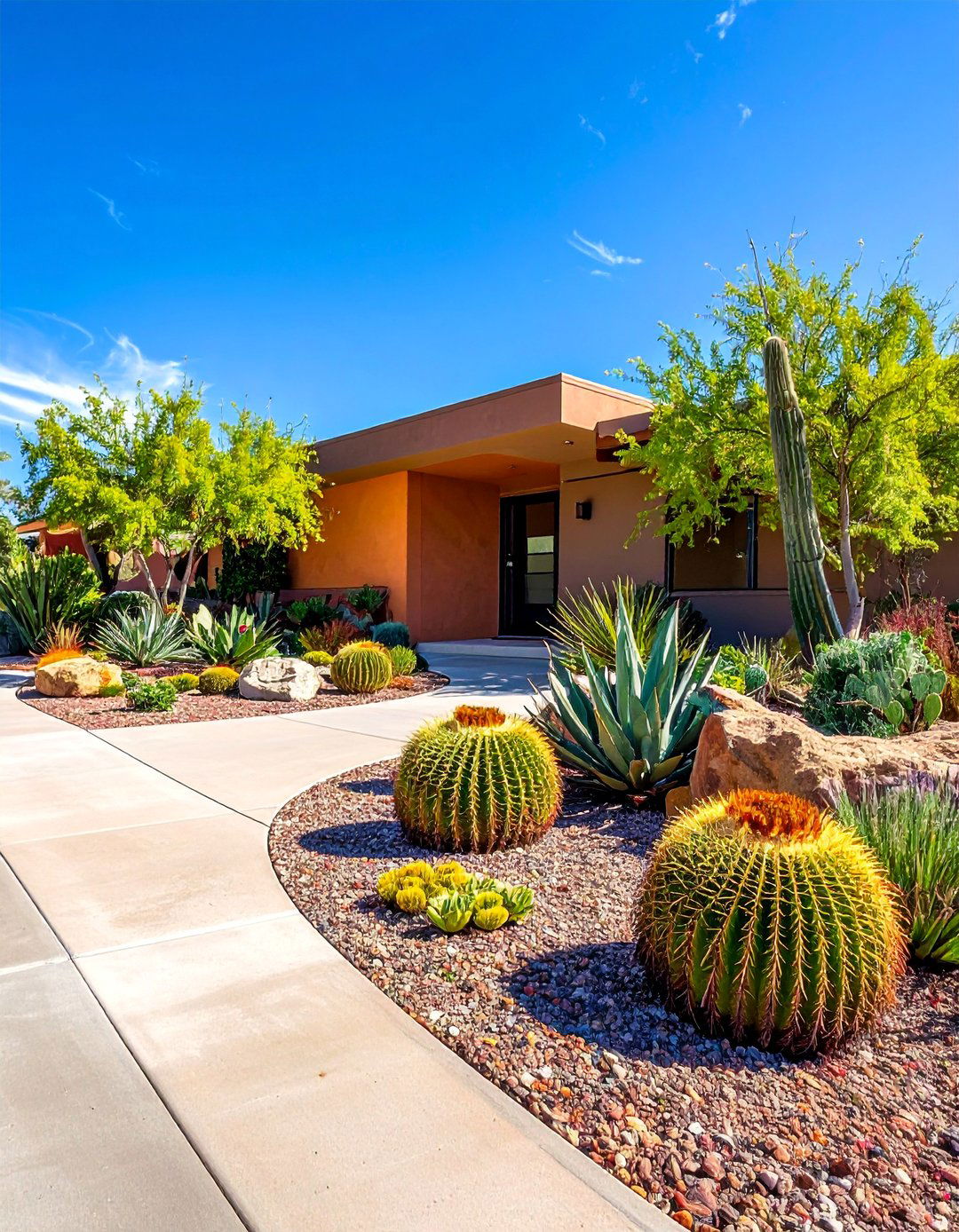
Can a landscape inspired by the Sonoran Desert work in your suburban yard? Desert-style designs use cacti, agaves, and other sculptural succulents to create dramatic, architectural landscapes that require almost no supplemental watering. Large specimen plants like barrel cacti or century plants serve as living sculptures, while smaller varieties fill in around them. Colored gravel mulch in warm tones complements the plants while preventing weeds and conserving soil moisture. This style works particularly well in hot, sunny locations where traditional gardens struggle. The stark beauty of desert plants creates bold, contemporary landscapes that look especially striking against modern architecture. These gardens celebrate the natural forms and adaptations that allow plants to thrive in challenging conditions.
8. Native Wildflower Meadows

What if your yard could become a haven for butterflies, bees, and other pollinators while requiring minimal maintenance? Native wildflower meadows replace water-hungry lawns with diverse plantings that support local ecosystems. These naturalistic gardens change dramatically throughout the growing season as different flowers bloom in succession. Early spring might bring lupines and wild columbines, followed by summer displays of blanket flowers and coneflowers. The key is selecting wildflowers native to your specific region that can compete with grasses and self-seed for natural regeneration. Once established, these meadows require only annual mowing after the growing season. They provide food and shelter for wildlife while creating beautiful, ever-changing displays that connect your yard to the surrounding natural landscape.
9. Gravel Garden Designs
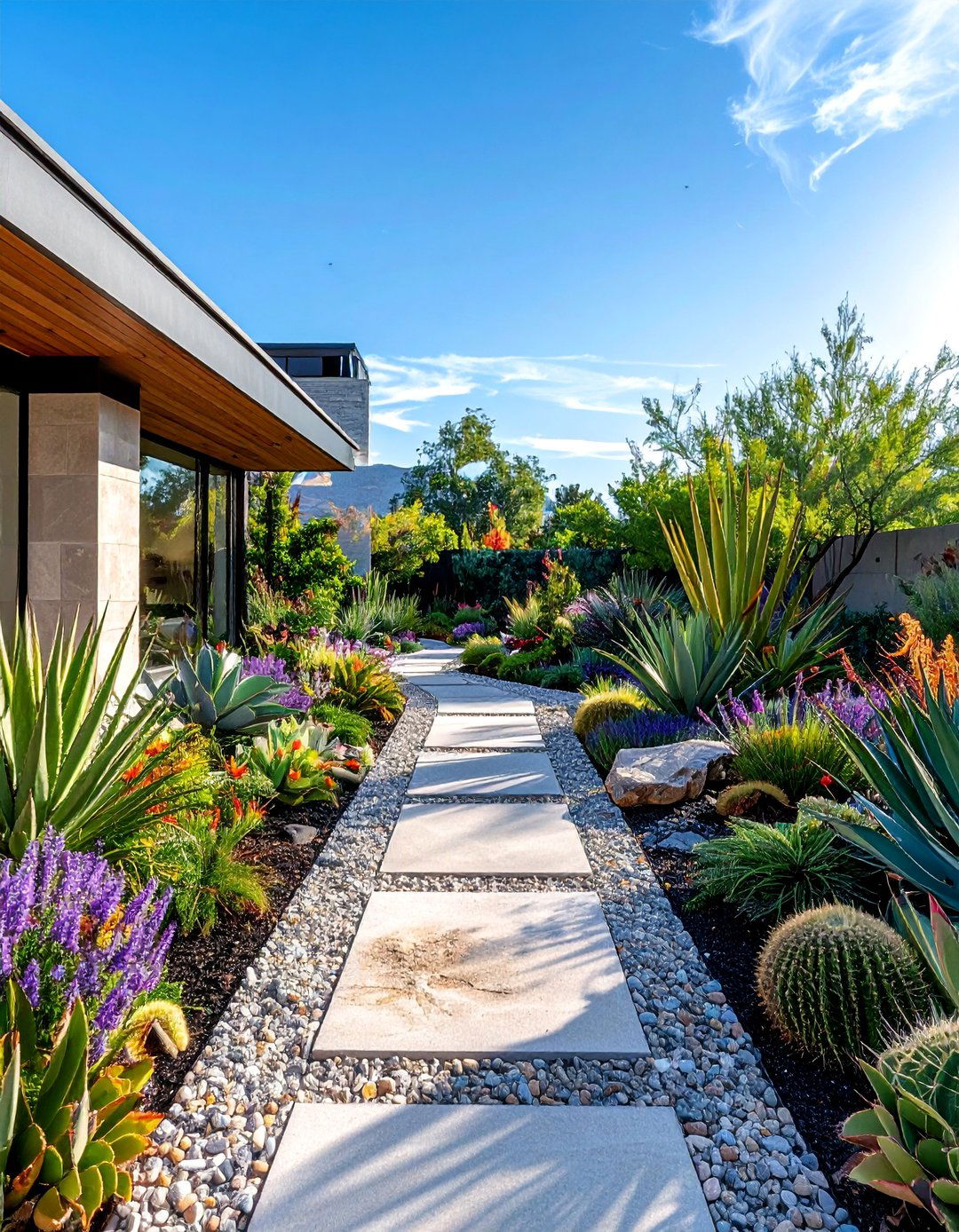
Are you looking for a sophisticated, low-maintenance alternative to traditional flower beds? Gravel gardens use drought-tolerant plants set in beds of decorative stone mulch to create elegant, contemporary landscapes. This approach originated in British gardens where gravel provides excellent drainage for Mediterranean plants. The neutral background of gravel allows plant forms and textures to take center stage. Architectural plants like yuccas and ornamental grasses create strong focal points, while lower growing species like sedums and alliums provide seasonal color. Different sizes and colors of gravel can define planting areas and pathways. This style requires minimal watering once established and provides year-round structure even when plants are dormant.
10. Drought-Tolerant Ground Covers
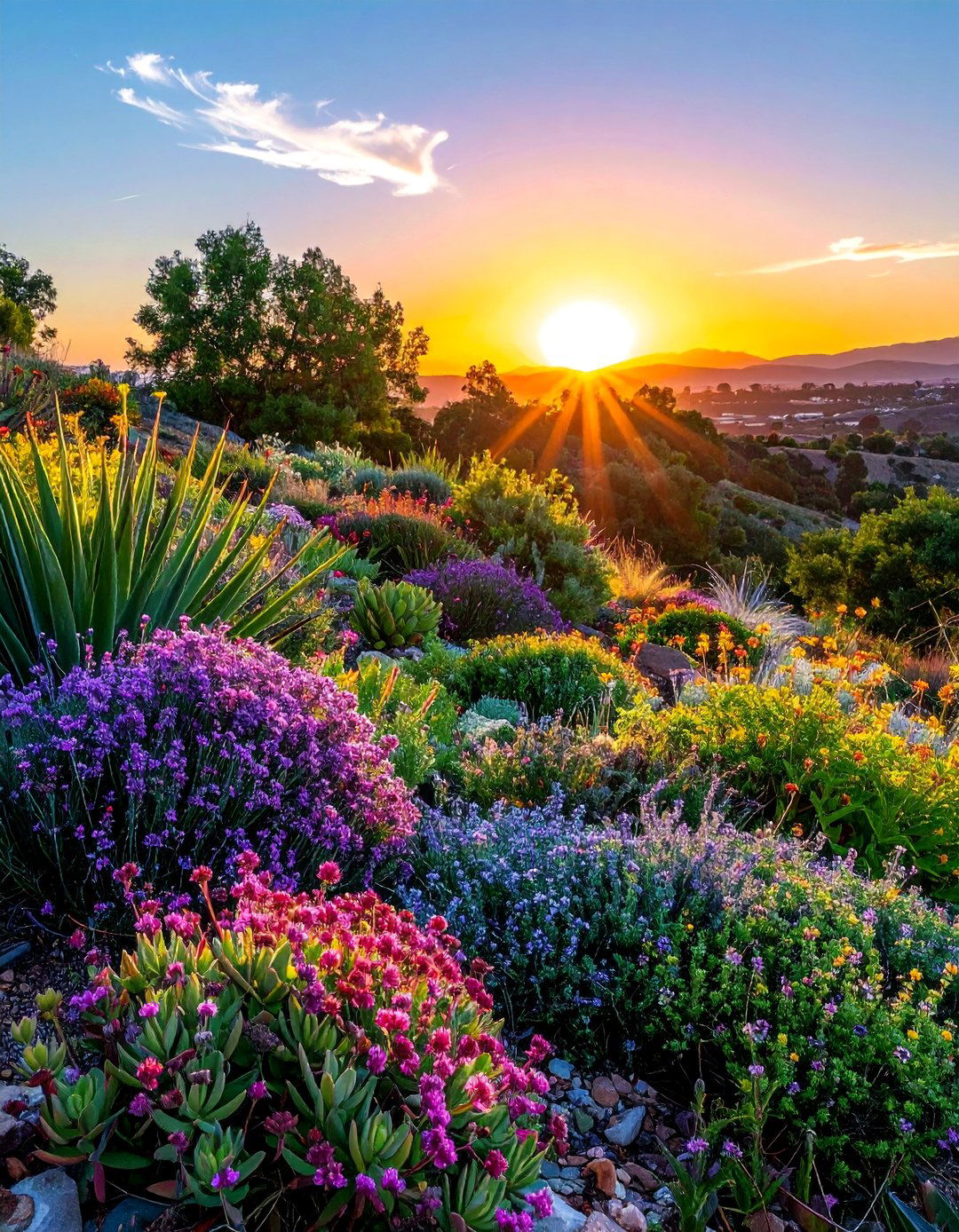
Why struggle with thirsty lawns when beautiful ground covers can provide lush carpets that thrive without irrigation? Drought-tolerant ground covers like creeping thyme, ice plant, and various sedums create living mulches that suppress weeds while adding color and texture. These low-growing plants spread naturally to form dense mats that feel soft underfoot in low-traffic areas. Many produce small flowers that attract beneficial insects. Unlike traditional grass lawns, these ground covers actually improve with age, becoming more drought-tolerant and weed-resistant as they mature. They work particularly well on slopes where erosion control is needed or in areas where mowing is difficult. Some varieties can even handle light foot traffic, making them practical alternatives to grass.
11. Courtyard Water Features
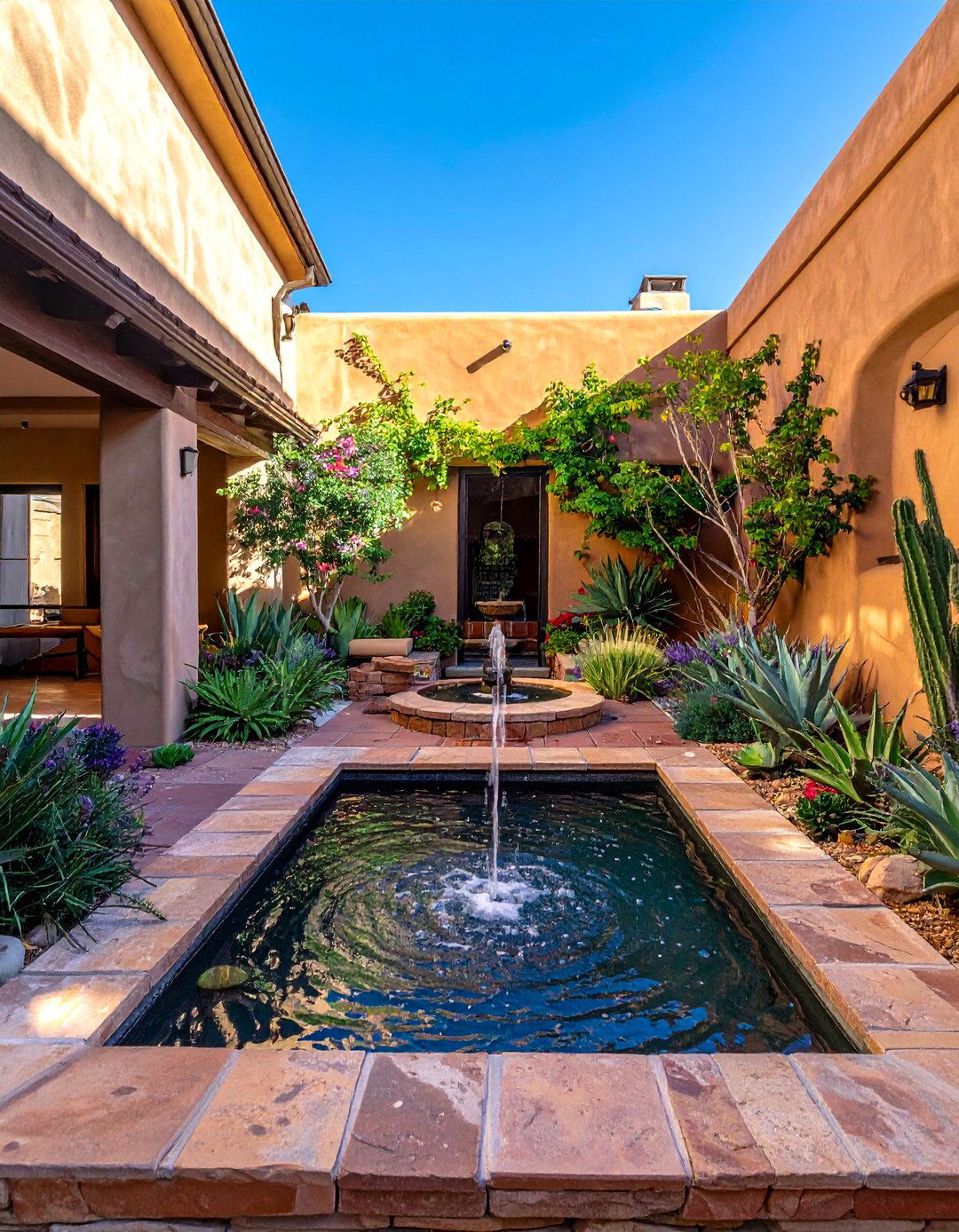
Can you create the soothing sounds of water without wasting this precious resource? Drought-tolerant water features use recirculating systems that conserve water while providing the psychological benefits of moving water. Small fountains, bubbling rocks, or shallow reflecting pools require minimal water once filled. The sound of trickling water creates a cooling effect and masks nearby noise. Surround these features with drought-tolerant plants that appreciate the occasional splash and increased humidity. Consider dry creek beds that simulate water features using carefully arranged stones and drought-tolerant plants. These create the visual appeal of water landscapes without ongoing water requirements. During rare heavy rains, they can temporarily carry actual water, making them both beautiful and functional.
12. Terraced Hillside Gardens
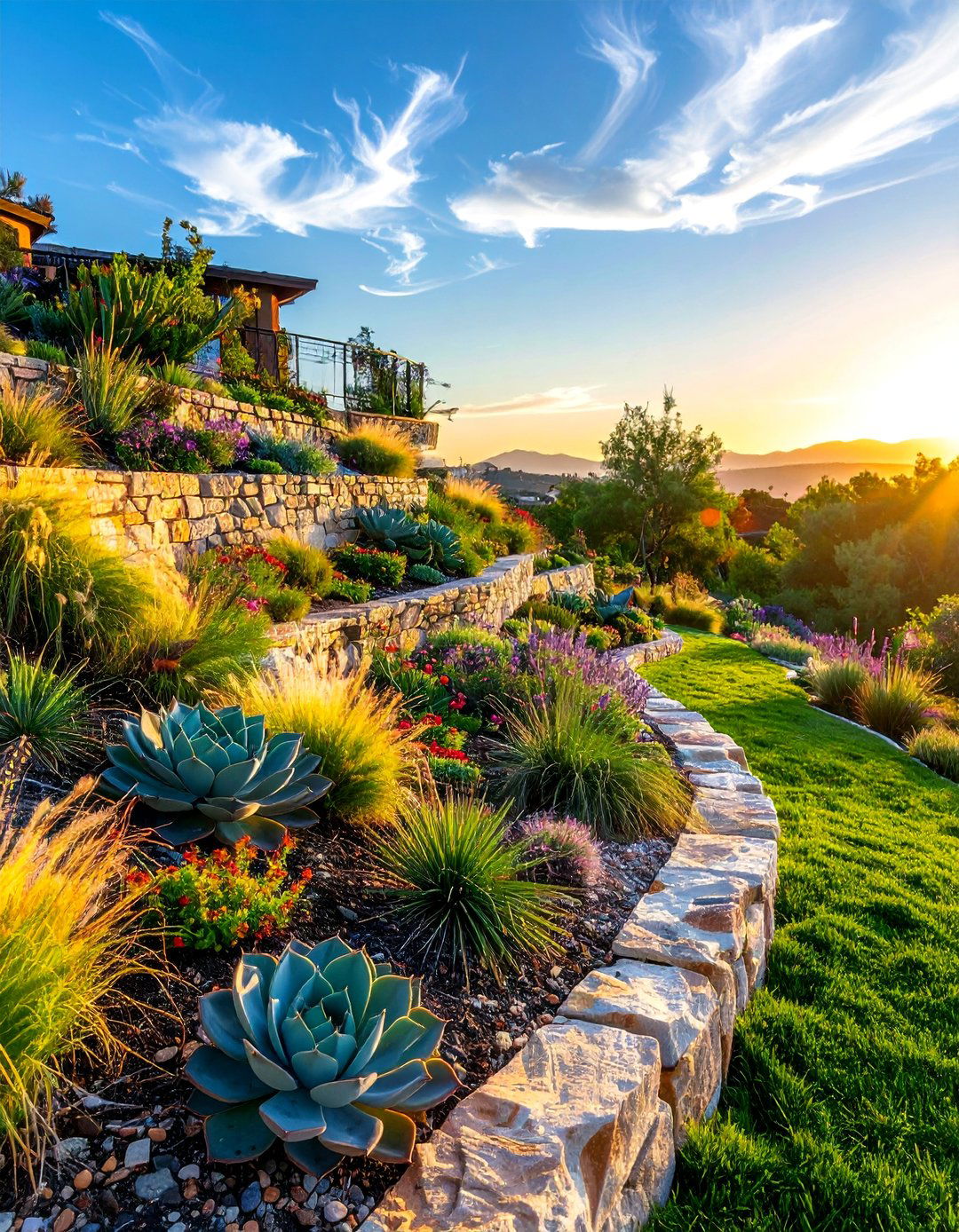
How can you transform a challenging slope into a stunning landscape feature? Terraced hillside gardens use retaining walls and berms to create level planting areas that prevent erosion while showcasing drought-tolerant plants. These stepped garden beds can be built with natural stone, timber, or concrete blocks depending on your style preferences. Each terrace creates a microclimate with slightly different drainage characteristics, allowing you to group plants by their specific needs. Upper terraces might feature cacti and succulents that prefer perfect drainage, while lower areas could accommodate native grasses and wildflowers. This approach prevents water runoff and soil erosion while creating dramatic visual impact. The vertical structure adds dimension to otherwise flat landscapes and provides opportunities for cascading plants to spill over retaining walls.
13. Container Gardens with Drought Plants
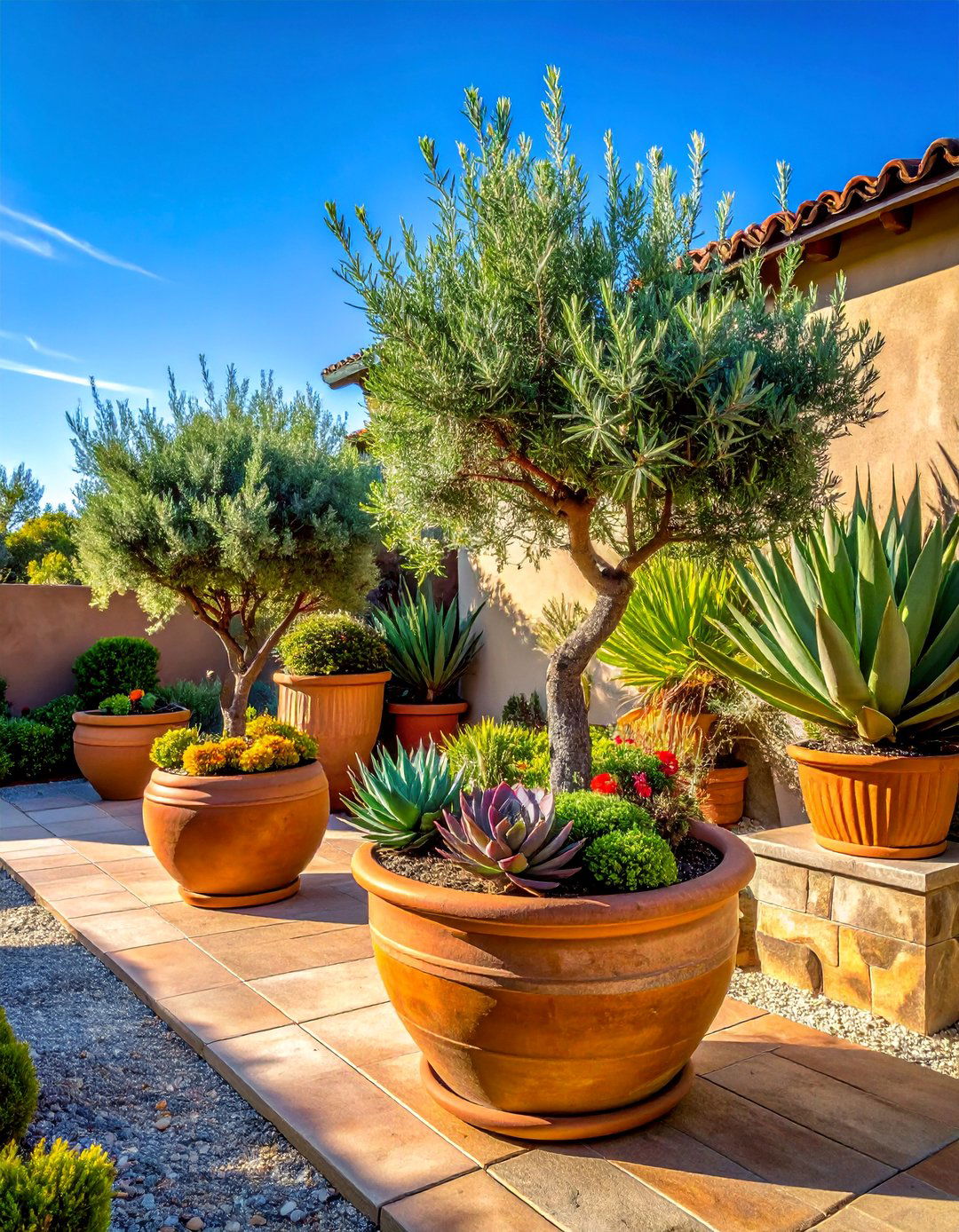
What if you could enjoy beautiful drought-tolerant gardens even in small spaces or rental properties? Container gardens allow you to create stunning displays using drought-tolerant plants in pots, planters, and raised beds that can be moved as needed. Large containers can accommodate small trees like olive or pomegranate, while smaller pots showcase succulent collections or herb gardens. The key is selecting containers with adequate drainage and using specialized potting mixes designed for drought-tolerant plants. Group containers of different sizes and heights to create visual interest and microclimates. This approach works perfectly for patios, balconies, or anywhere you want to add plantings without permanent landscaping. Containers also allow you to experiment with plant combinations before committing to in-ground installations.
14. Fire-Resistant Landscape Zones
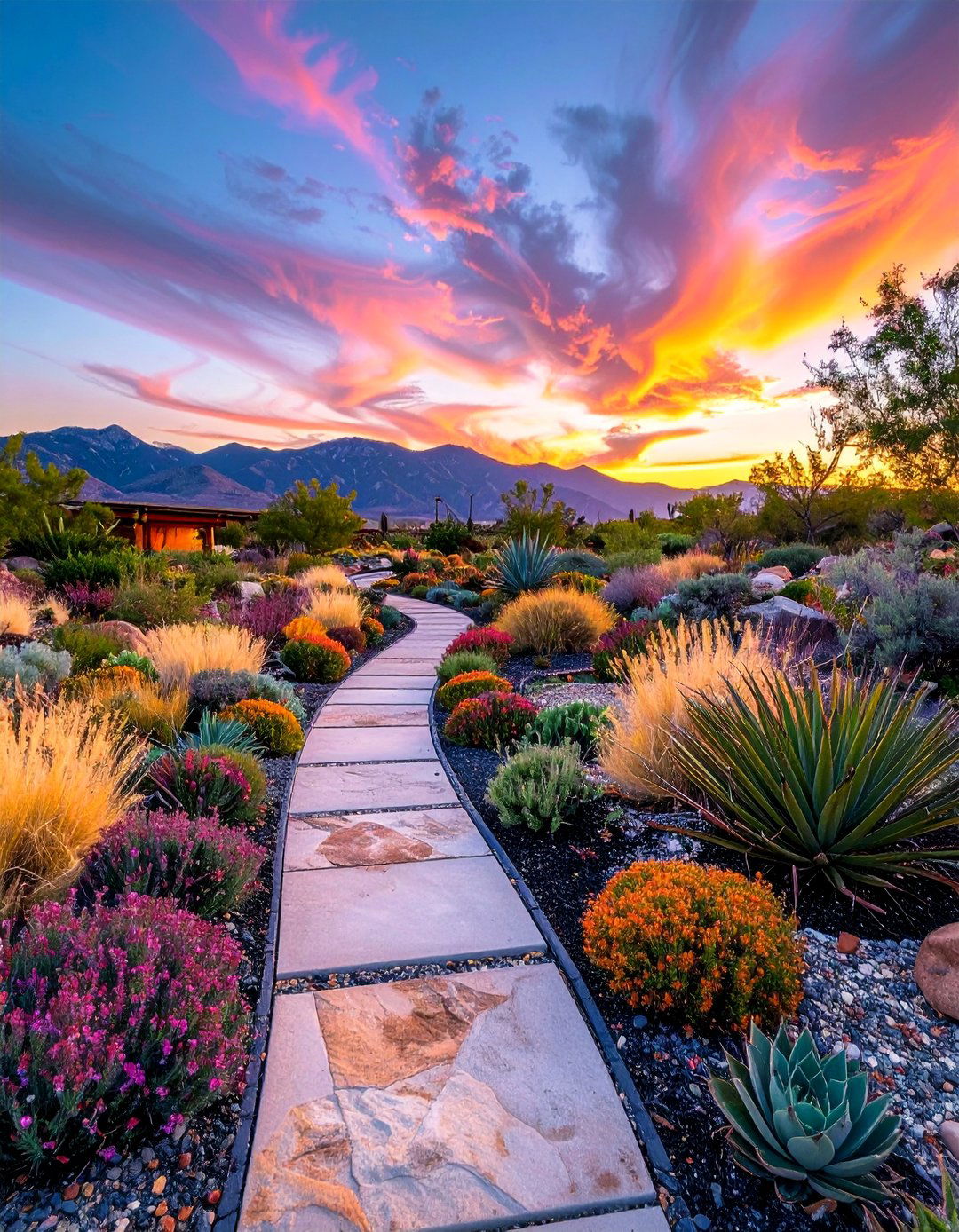
Are you concerned about wildfire risk while still wanting beautiful landscaping? Fire-resistant landscape zones use carefully selected plants and design strategies to create defensible space around homes while maintaining aesthetic appeal. These zones feature plants with high moisture content, low resin or oil production, and open growth habits that don't readily carry fire. Succulents, many native perennials, and deciduous trees create effective firebreaks. Hardscaping elements like gravel paths, stone patios, and water features provide additional fire resistance. Plants should be well-spaced to prevent fire from jumping between them, and regular maintenance removes dead plant material that could fuel fires. This approach demonstrates that safety and beauty can coexist in fire-prone areas.
15. Seasonal Interest Plantings
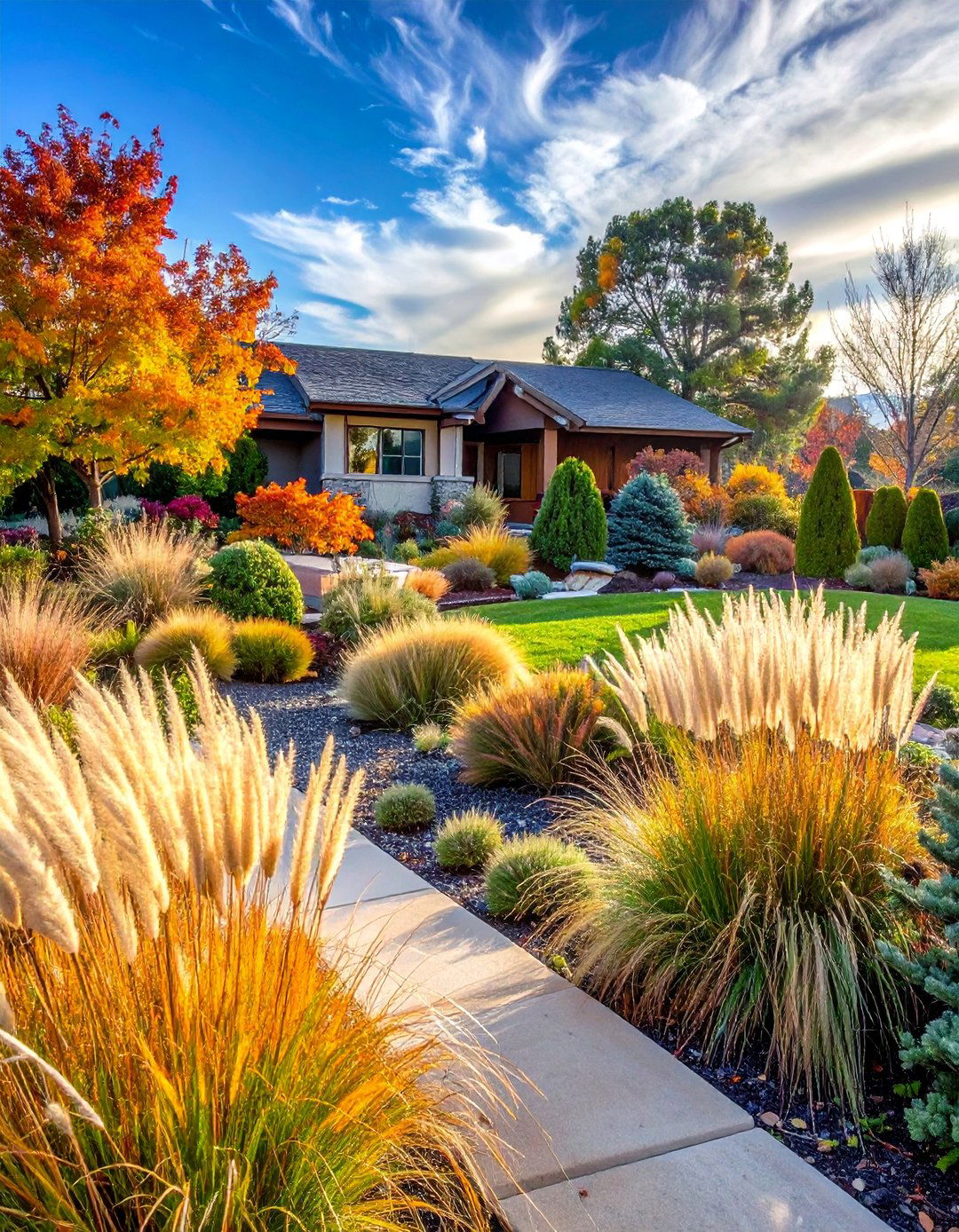
Why settle for gardens that look good only during peak growing season? Seasonal interest plantings use drought-tolerant plants that provide visual appeal throughout the year, from spring flowers to winter seed heads. Plan your garden to have something beautiful happening in every season. Spring might feature early-blooming bulbs like alliums and tulips that naturalize in dry conditions. Summer brings the peak bloom time for many drought-tolerant perennials like lavender and Russian sage. Fall offers dramatic foliage color from ornamental grasses and native plants. Winter structure comes from evergreen shrubs, interesting bark, and persistent seed heads that look beautiful covered with frost. This approach ensures your drought-tolerant landscape remains engaging year-round rather than looking dormant for months at a time.
16. Edible Drought-Tolerant Gardens
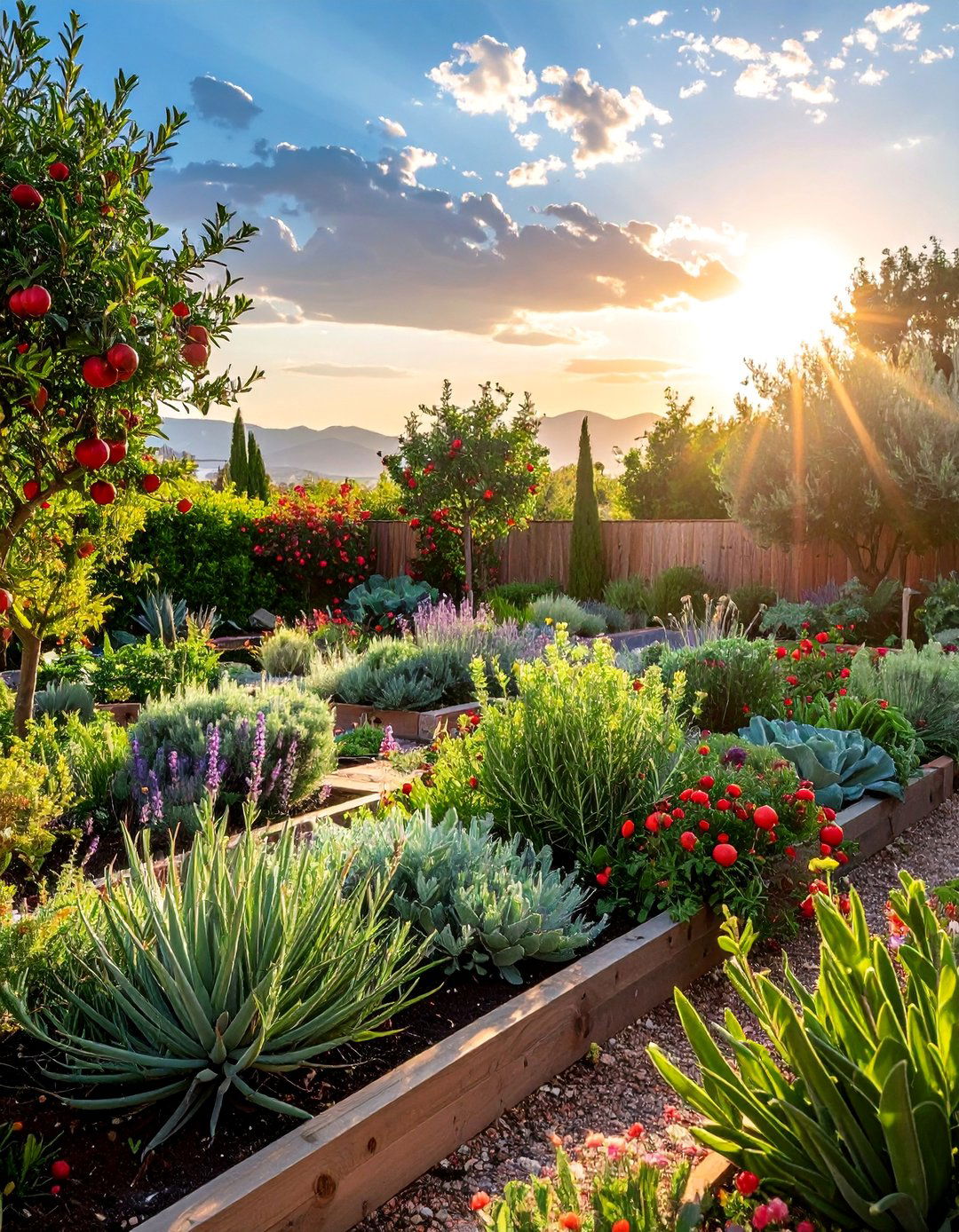
Can you grow food while conserving water and creating beautiful landscapes? Edible drought-tolerant gardens feature food plants that thrive with minimal irrigation once established. Mediterranean herbs like rosemary, oregano, and sage provide both culinary value and landscape beauty. Fruit trees adapted to dry conditions include pomegranates, figs, and certain citrus varieties in appropriate climates. Many vegetables can be grown with drip irrigation systems that deliver water directly to root zones. Perennial vegetables like artichokes and asparagus require less water than annual crops once established. This approach demonstrates that productive landscapes don't require excessive water inputs. Combining edible plants with ornamental drought-tolerant species creates gardens that feed both body and soul while respecting water resources.
17. Modern Minimalist Designs
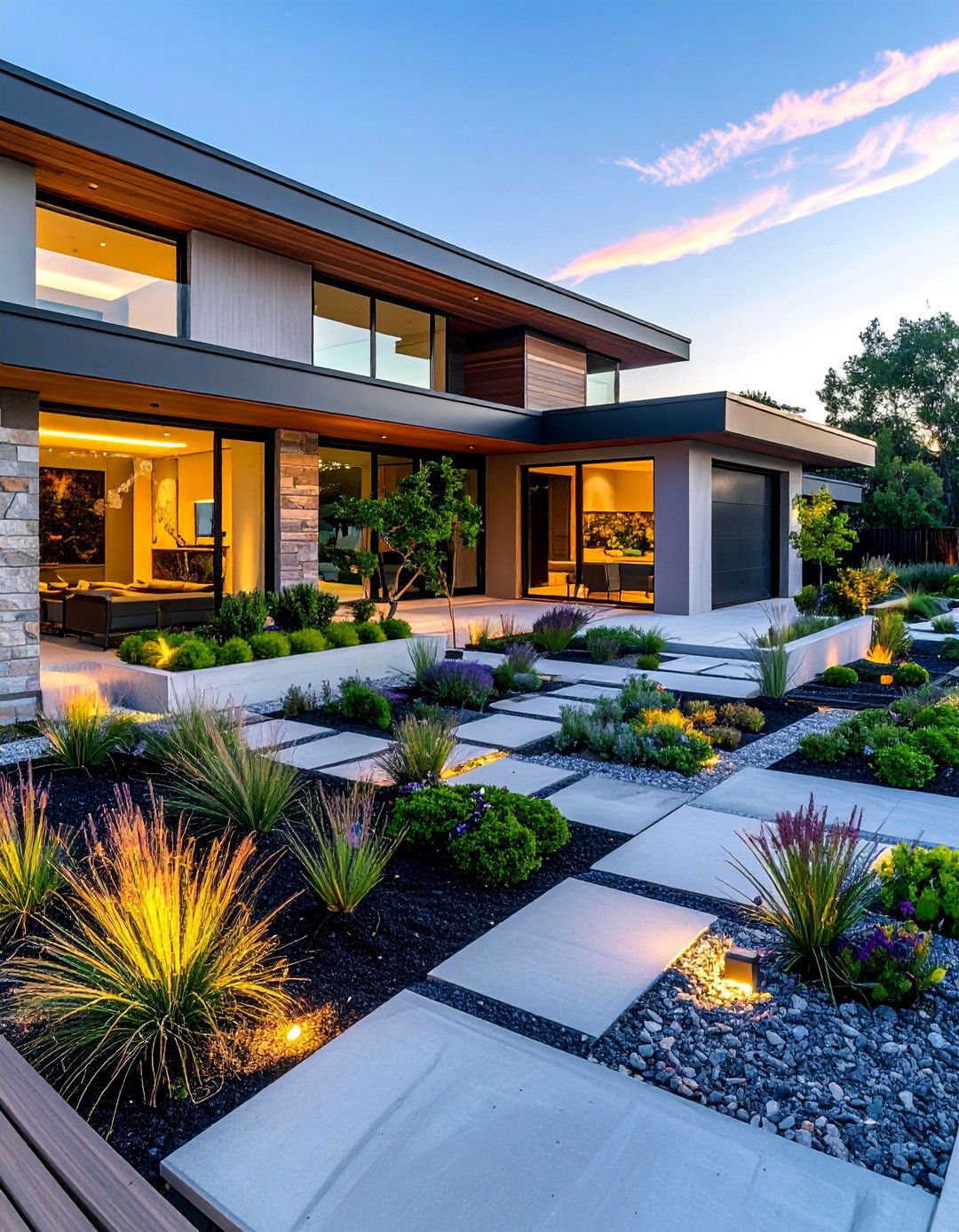
How can you create sophisticated, contemporary landscapes that also conserve water? Modern minimalist designs use clean lines, geometric shapes, and carefully selected drought-tolerant plants to create striking visual impact with minimal elements. These gardens might feature large specimens of architectural plants like agaves or yuccas as living sculptures against neutral backgrounds. Geometric planting beds filled with single species create bold patterns and reduce maintenance requirements. Hardscaping materials like corten steel, concrete, and contemporary stone complement the architectural qualities of drought-tolerant plants. This style emphasizes the natural forms and textures of water-wise plants while creating sophisticated outdoor spaces. The restrained plant palette and strong design structure make these gardens particularly suitable for contemporary architecture.
18. Wildlife Habitat Gardens

What if your drought-tolerant landscape could become a thriving ecosystem that supports local wildlife? Wildlife habitat gardens use native plants and water-wise design principles to create food and shelter for birds, butterflies, and beneficial insects. Native plants provide seeds, nectar, and host sites for insects that form the base of food webs. Small water sources like shallow dishes or recirculating fountains provide drinking water for wildlife. Dense shrubs and ornamental grasses offer nesting sites and protection from predators. This approach creates gardens that are both beautiful and functional from an ecological perspective. Watching wildlife use your garden adds an extra dimension of enjoyment while knowing you're contributing to conservation efforts. These gardens demonstrate how individual landscapes can support broader environmental goals.
19. Shade Garden Adaptations
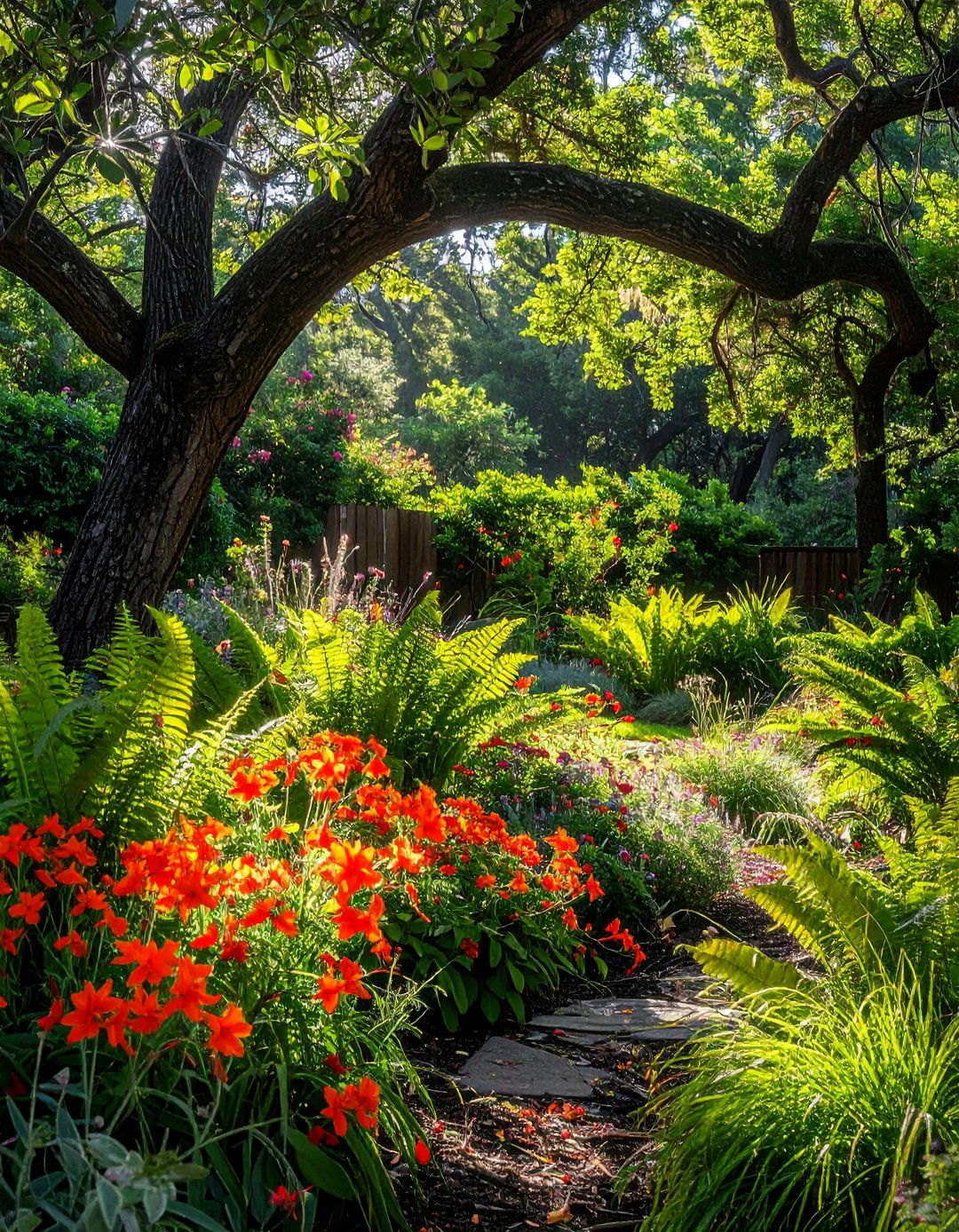
Are you dealing with shady areas where traditional drought-tolerant plants struggle? Shade garden adaptations use plants that tolerate both shade and drought conditions to create beautiful landscapes in challenging locations. Many native woodland plants have adapted to survive dry summers under tree canopies. Coral bells, wild ginger, and native ferns can thrive with minimal supplemental watering once established. Some succulents like certain sedums and sempervivums actually prefer protection from intense sun in hot climates. Ornamental grasses like Japanese forest grass create elegant texture in shaded areas. The key is understanding that shade and drought tolerance often go hand in hand in nature. These gardens prove that water conservation strategies can work throughout your landscape, not just in sunny locations.
20. Vertical Garden Systems
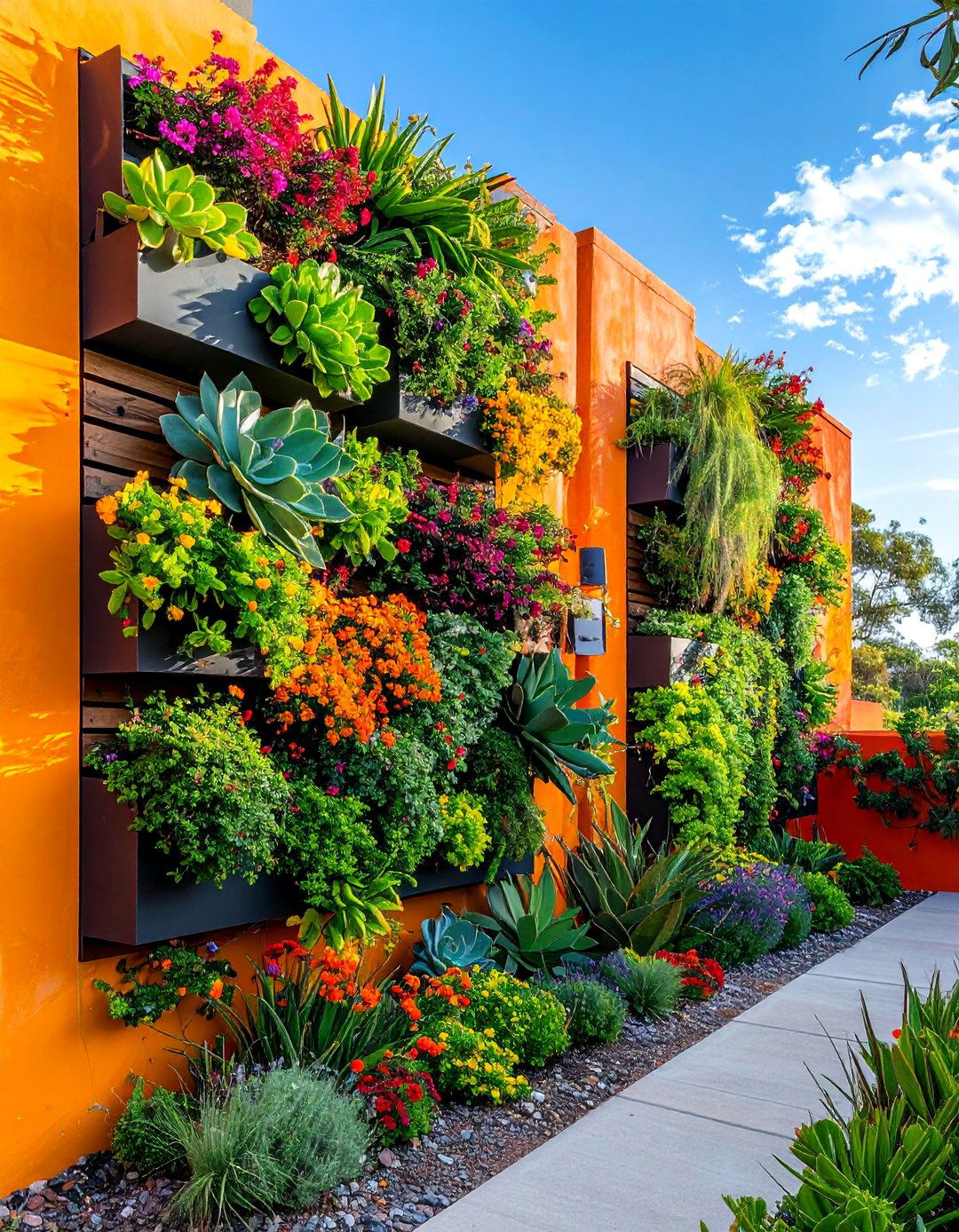
Can you maximize your planting space while minimizing water usage? Vertical garden systems use walls, trellises, and specialized planting structures to create dramatic displays of drought-tolerant plants in minimal square footage. Living walls featuring succulents create stunning focal points while requiring very little water. Climbing plants like drought-tolerant vines can cover unsightly walls while providing habitat and visual interest. Pocket planters and modular systems allow you to create custom arrangements that suit your space and style. These systems work particularly well for small yards, urban environments, or anywhere you want to maximize visual impact. Vertical gardens also create microclimates that can support slightly different plant communities, adding diversity to your drought-tolerant landscape.
21. Entrance and Foundation Plantings
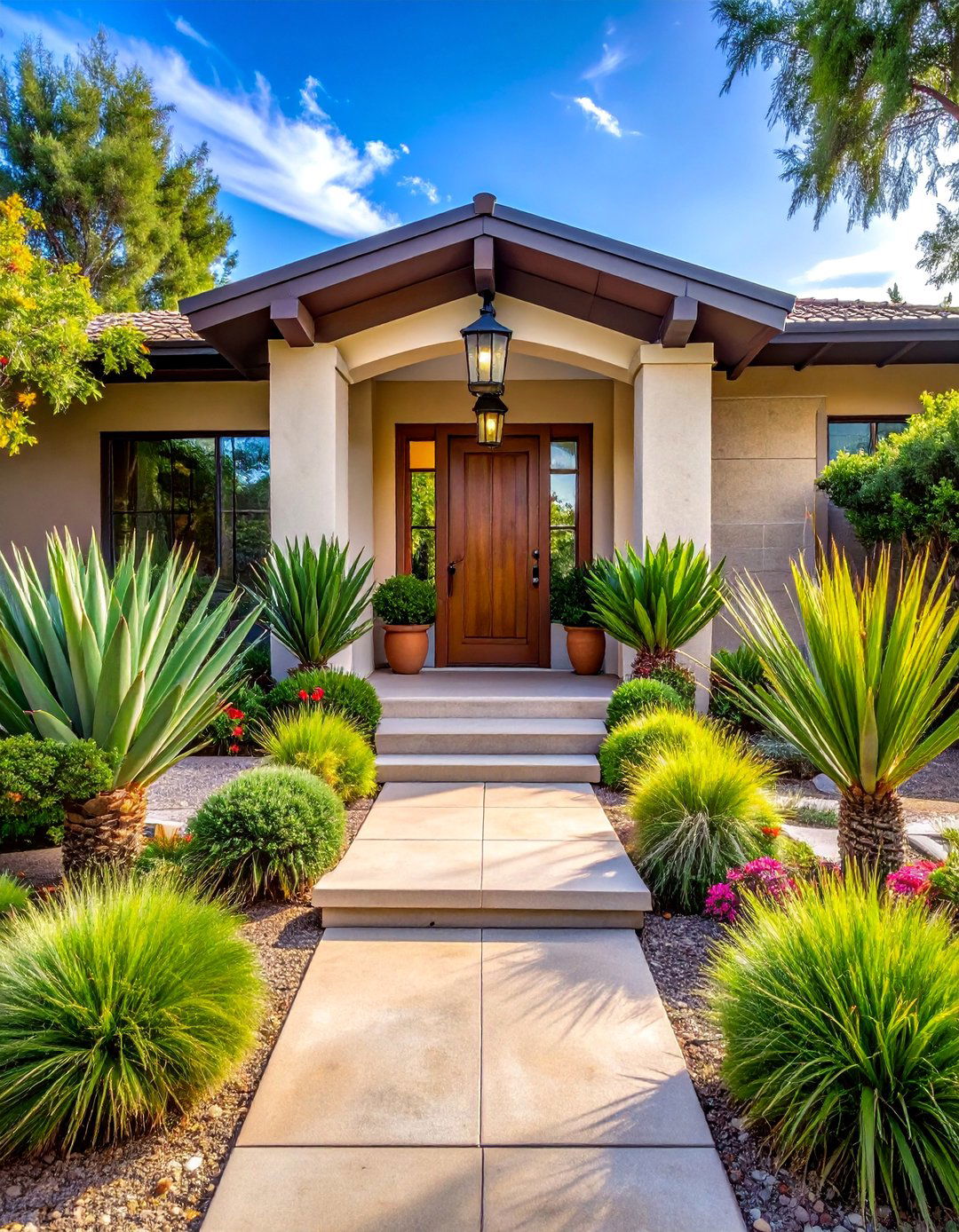
How can you create an impressive welcome to your home while using water-wise plants? Entrance and foundation plantings use drought-tolerant species to frame your home's architecture and create inviting approaches for visitors. These high-visibility areas require plants that look good year-round and can handle the challenging conditions near buildings. Architectural plants like yuccas or large ornamental grasses create strong statements, while lower growing perennials and ground covers soften harsh lines. Consider the mature size of plants to avoid maintenance issues later. These plantings should complement your home's style while demonstrating that water conservation doesn't mean sacrificing curb appeal. Foundation areas often have excellent drainage due to construction techniques, making them naturally suited to drought-tolerant plants.
22. Transitional Border Gardens
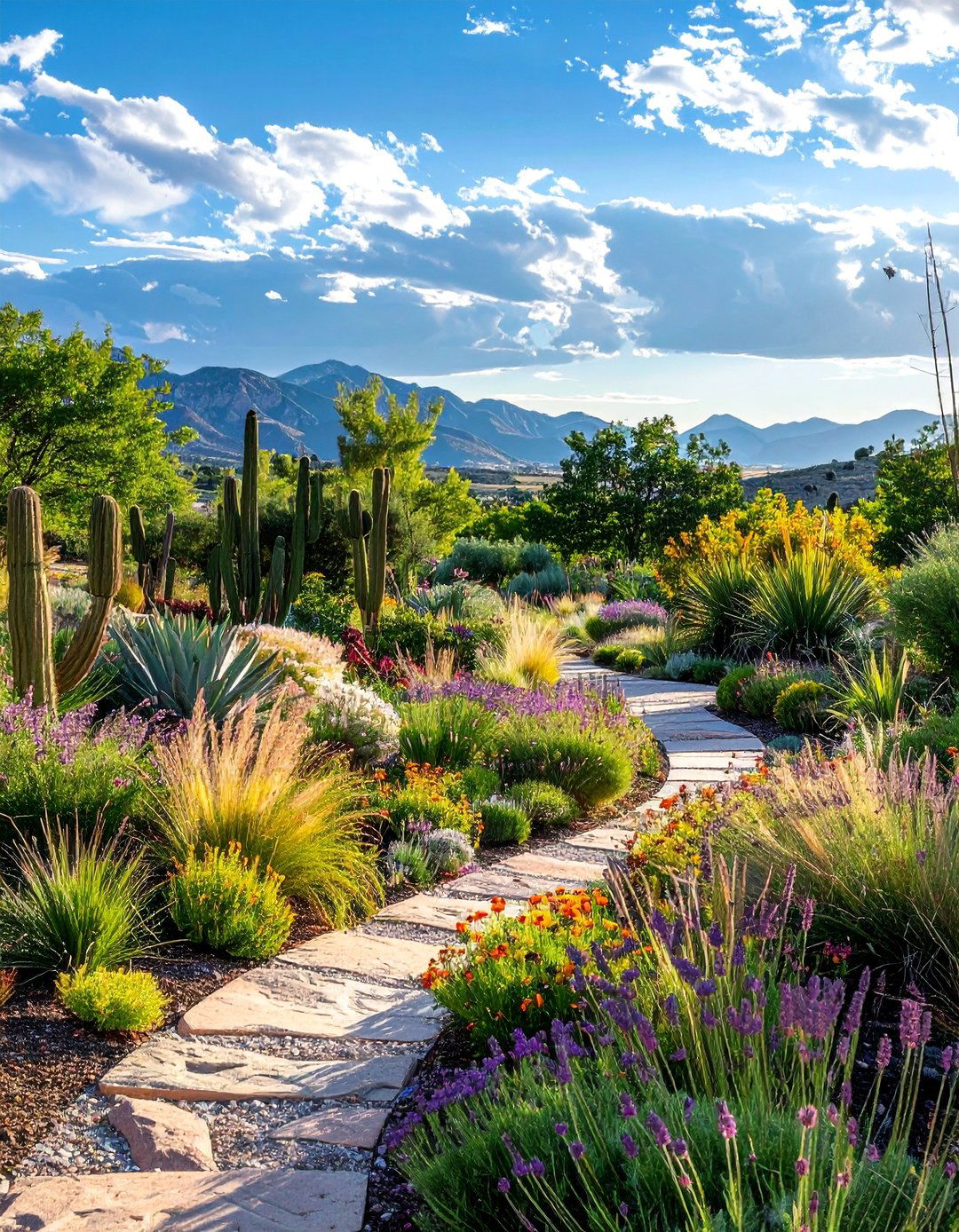
What's the secret to making drought-tolerant gardens blend seamlessly with surrounding landscapes? Transitional border gardens use graduated plantings that ease the visual transition between formal landscapes and natural areas. These borders might start with more structured plantings near buildings and gradually become more naturalistic toward property edges. Native plants help connect your designed landscape to surrounding ecosystems. Varying plant heights and textures create visual interest while serving as habitat corridors for wildlife. These areas demonstrate how drought-tolerant landscaping can integrate with broader conservation goals. The key is selecting plants that look natural together while serving the practical purpose of defining spaces and creating privacy. These borders prove that water-wise gardens can be both functional and beautiful.
23. Seasonal Color Combinations
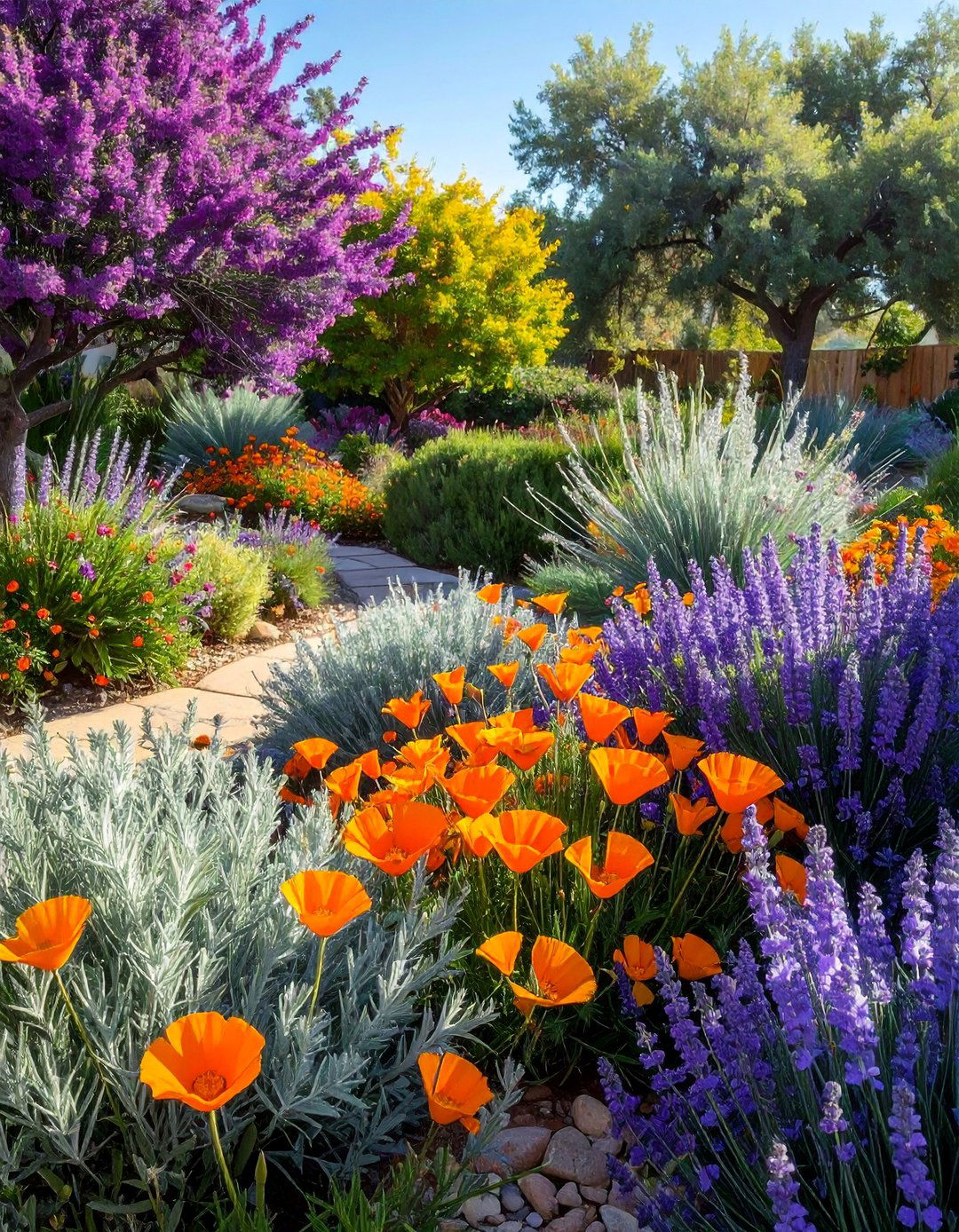
Why limit yourself to green when drought-tolerant plants offer amazing color possibilities? Seasonal color combinations use foliage and flower colors to create dynamic displays that change throughout the year. Silver and grey plants like artemisia and lavender provide cool, calming effects while conserving water through their specialized leaf surfaces. Red and orange flowers from plants like California poppy and blanket flower create warm, energetic displays. Purple flowers from salvias and catmint provide rich, sophisticated color combinations. Consider how different plants' colors interact and plan combinations that work in multiple seasons. Foliage colors often provide longer-lasting effects than flowers, making them important elements in color planning. These gardens demonstrate that water conservation and visual excitement can go hand in hand.
24. Mulching and Soil Management

Are you maximizing the water retention potential of your soil? Mulching and soil management techniques help drought-tolerant plants establish faster and survive with less irrigation. Organic mulches like wood chips gradually improve soil structure while reducing evaporation and suppressing weeds. Inorganic mulches like gravel provide permanent weed suppression and work particularly well with succulent and mediterranean plants. Soil amendments like compost help newly planted drought-tolerant species establish strong root systems before relying solely on natural rainfall. The key is understanding that even drought-tolerant plants need help during their establishment period. Proper soil preparation and mulching create conditions that allow plants to develop the deep root systems that make them truly drought-tolerant.
25. Efficient Irrigation Systems
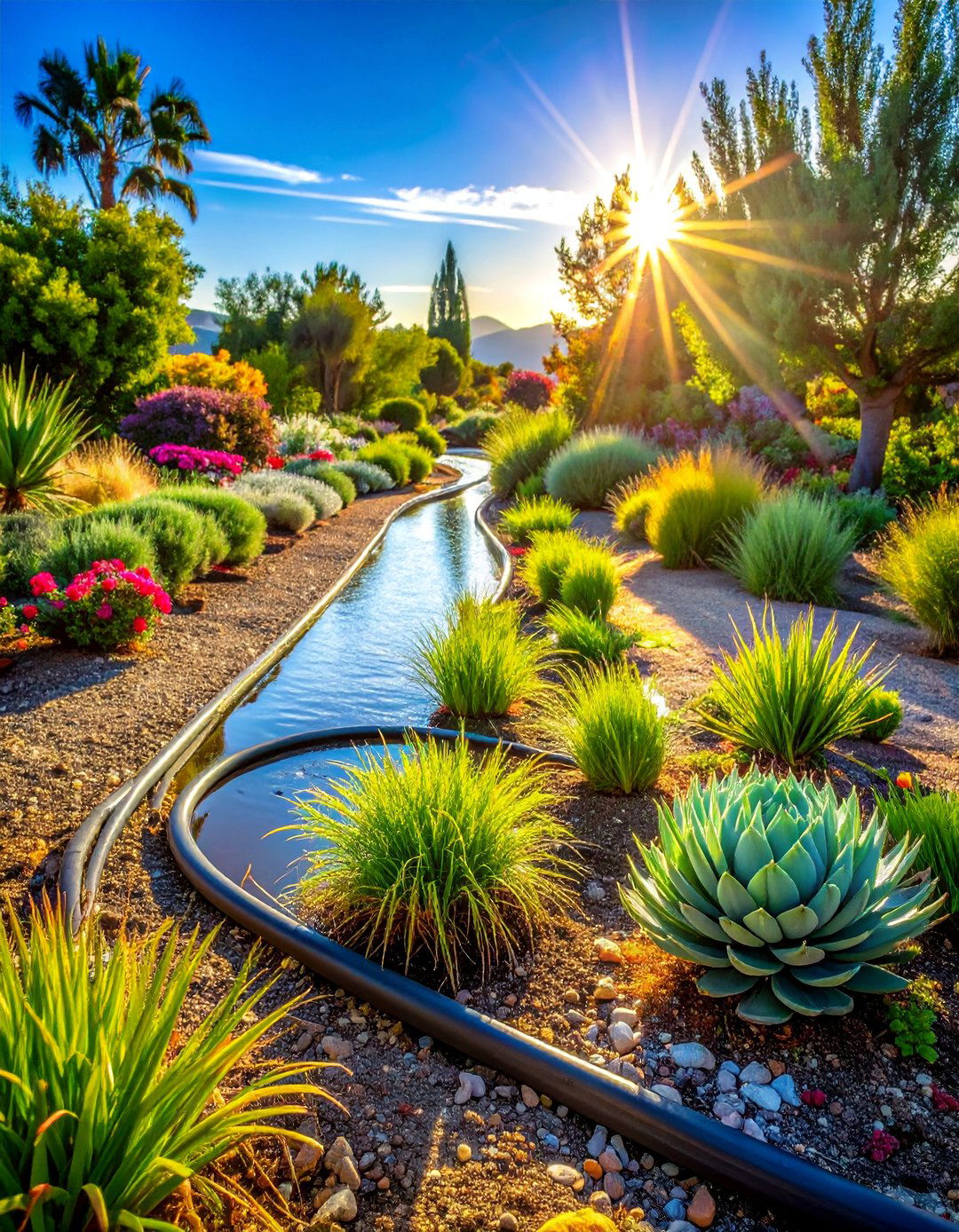
How can you provide water to plants when needed while minimizing waste? Efficient irrigation systems like drip irrigation and micro-sprays deliver water directly to plant root zones with minimal evaporation loss. These systems can be automated with timers and soil moisture sensors to provide precise watering schedules. Zoning allows different areas of your landscape to receive appropriate amounts of water based on plant needs. Even drought-tolerant plants benefit from occasional deep watering during establishment and extreme drought periods. Smart controllers can adjust watering schedules based on weather conditions and plant requirements. This technology ensures that water is used efficiently while maintaining plant health. These systems represent the practical side of drought-tolerant landscaping, proving that conservation and plant health can coexist.
26. Living Roof Gardens
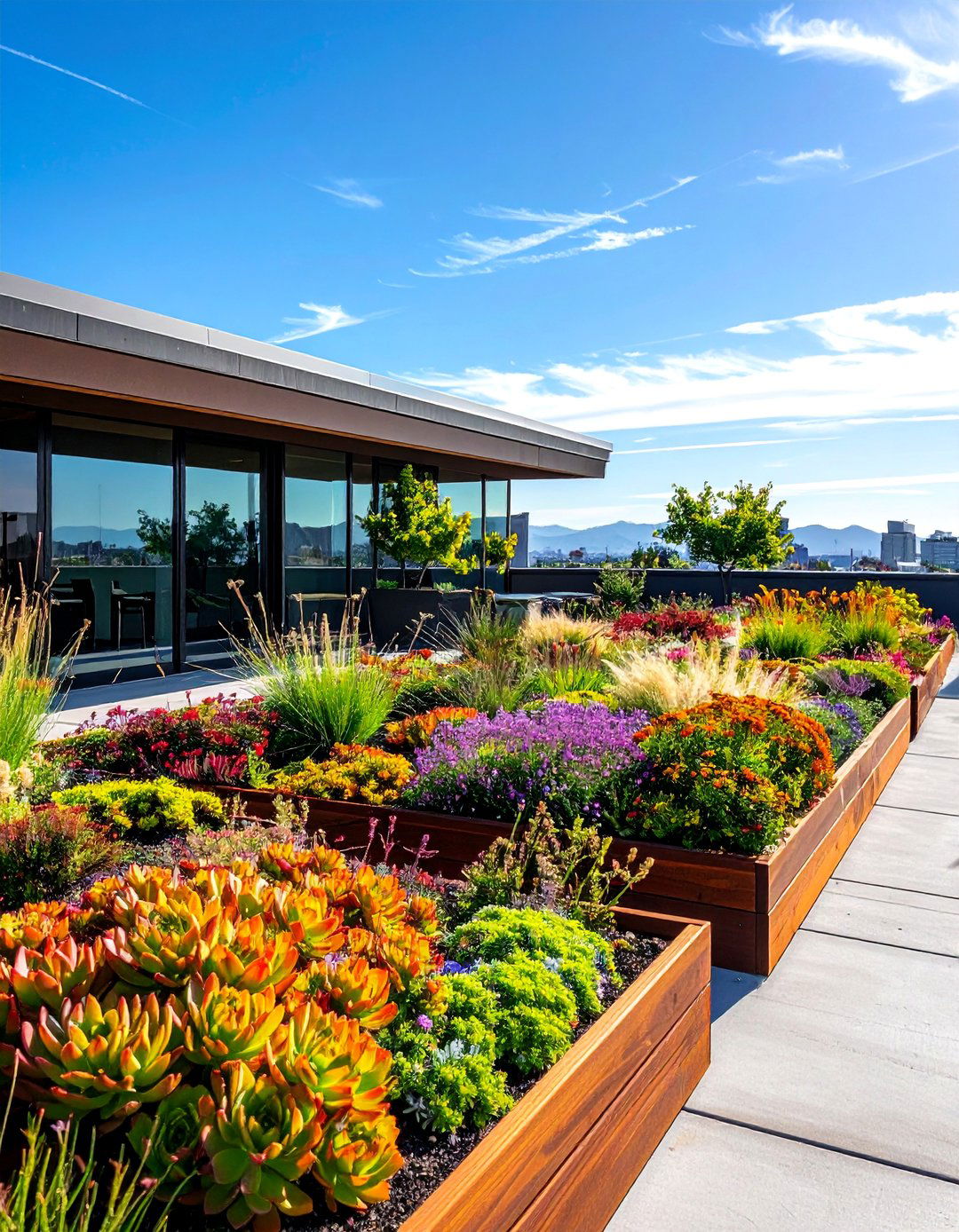
Can your roof become a beautiful, water-conserving garden space? Living roof gardens use drought-tolerant plants to create usable outdoor space while providing insulation and stormwater management benefits. Extensive green roofs featuring sedums and native grasses require minimal maintenance and irrigation once established. These systems reduce building energy costs while creating habitat and managing rainwater runoff. The plants must tolerate extreme conditions including high winds, temperature fluctuations, and thin growing medium. Modular systems make installation easier and allow for future modifications. Living roofs demonstrate how drought-tolerant landscaping principles can be applied to urban environments where ground space is limited. They prove that conservation strategies can work in unexpected places while providing multiple environmental benefits.
27. Fragrance Gardens
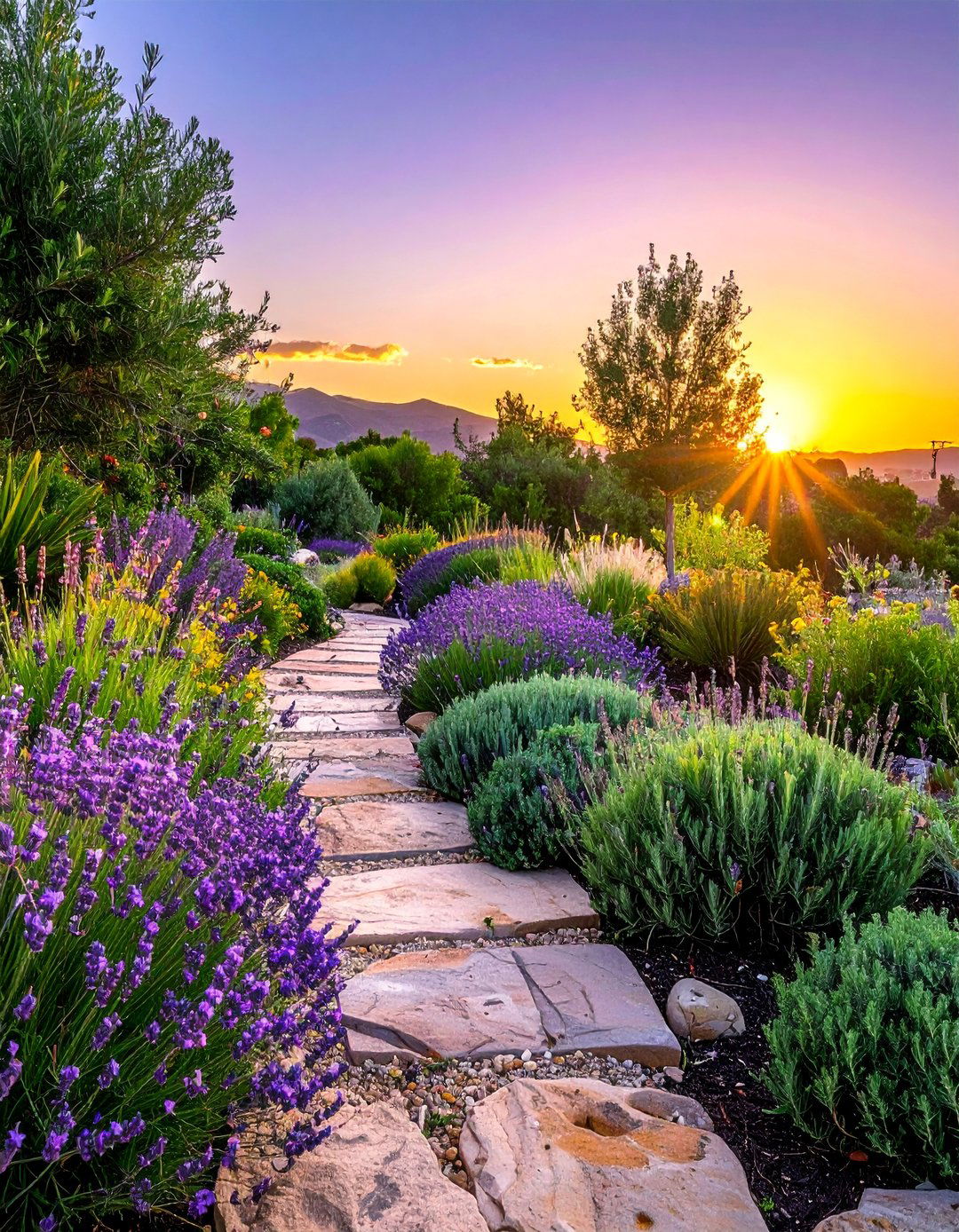
What if your drought-tolerant garden could engage your sense of smell as well as sight? Fragrance gardens feature aromatic plants that release pleasant scents while requiring minimal water. Mediterranean herbs like lavender, rosemary, and thyme provide classic fragrances that intensify in hot, dry conditions. Native plants like sagebrush and California lilac offer regional scents that connect your garden to local ecosystems. Evening-blooming plants like four o'clocks release fragrances at night when you're most likely to be enjoying outdoor spaces. Position fragrant plants near seating areas, pathways, and windows where their scents can be appreciated. Many aromatic plants have natural pest-repelling properties, providing practical benefits along with sensory enjoyment. These gardens prove that water conservation doesn't mean sacrificing the full sensory experience of gardening.
28. Slope Stabilization Plantings
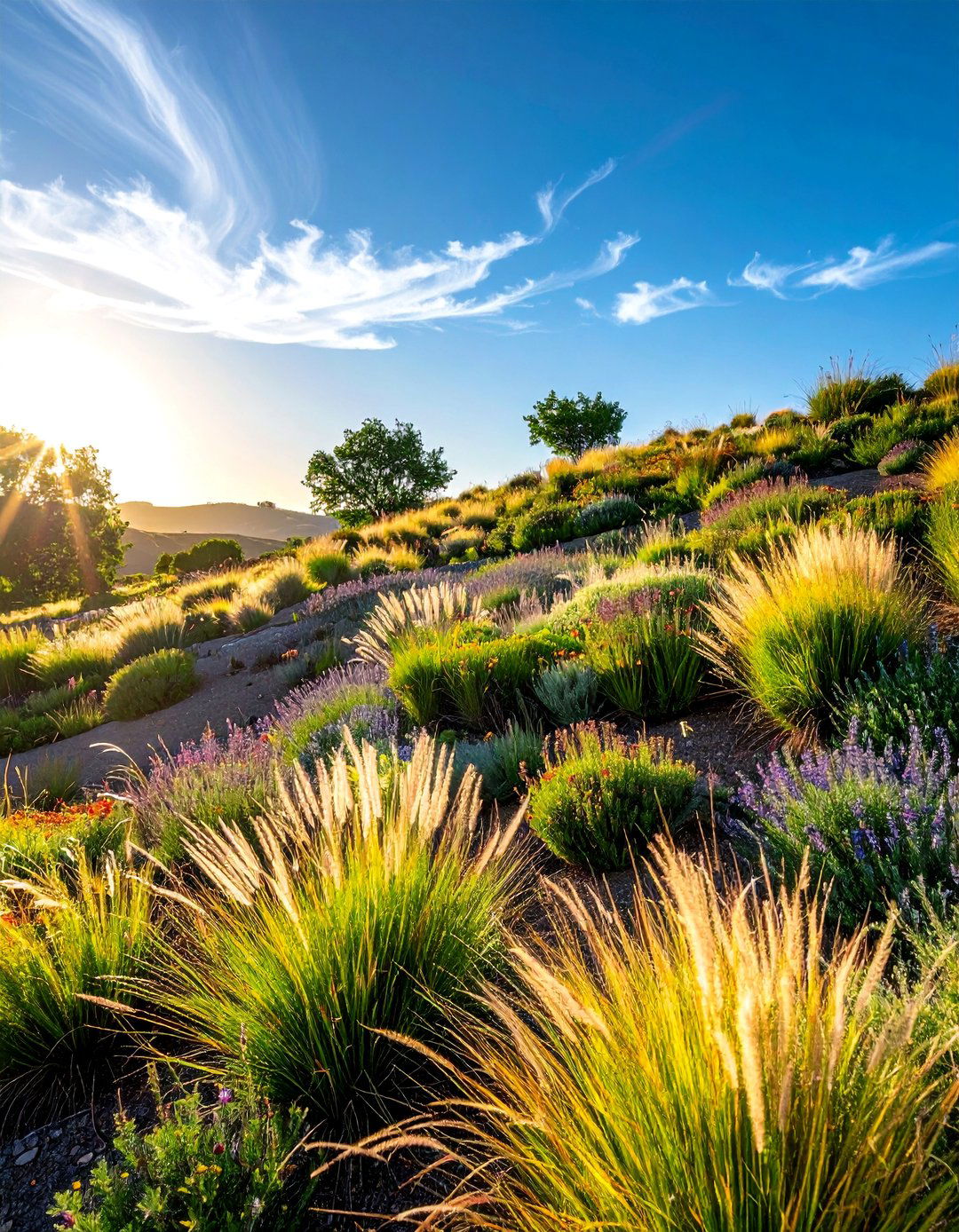
How can you prevent erosion while creating beautiful landscapes on challenging terrain? Slope stabilization plantings use deep-rooted, drought-tolerant plants to hold soil in place while creating attractive hillside gardens. Native bunch grasses develop extensive root systems that bind soil particles and prevent washouts during heavy rains. Ground-covering plants like creeping phlox or ice plant spread to form dense mats that protect soil surfaces. Terracing with drought-tolerant plants creates level areas for more diverse plantings while controlling water flow. These plantings serve the dual purpose of erosion control and landscape beauty. The key is selecting plants that establish quickly and develop strong root systems. These gardens demonstrate how environmental problems can be solved with beautiful, water-wise solutions.
29. Contemporary Sculpture Gardens
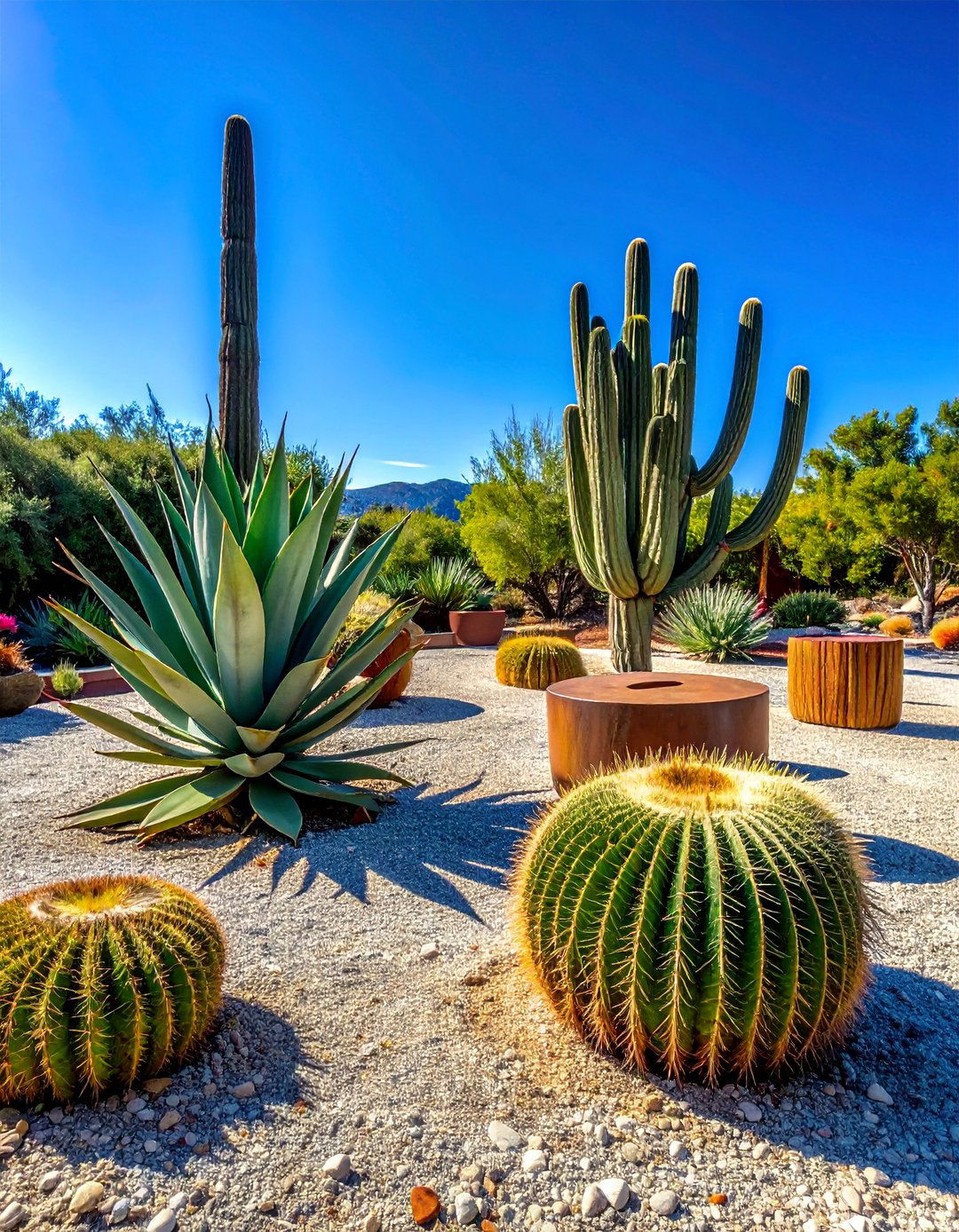
Can drought-tolerant plants serve as living art in your landscape? Contemporary sculpture gardens combine architectural plants with hardscape elements to create outdoor galleries that require minimal water. Large succulents like agaves and barrel cacti serve as living sculptures with dramatic forms that change with the seasons. The geometric shapes and bold textures of these plants complement contemporary art and architecture. Gravel or decomposed granite surfaces provide neutral backgrounds that highlight both plant and art forms. Strategic lighting can extend the visual impact into evening hours. This approach elevates drought-tolerant landscaping from merely practical to truly artistic. These gardens show how water conservation principles can create sophisticated, gallery-worthy outdoor spaces that challenge conventional ideas about garden design.
30. Microclimate Management
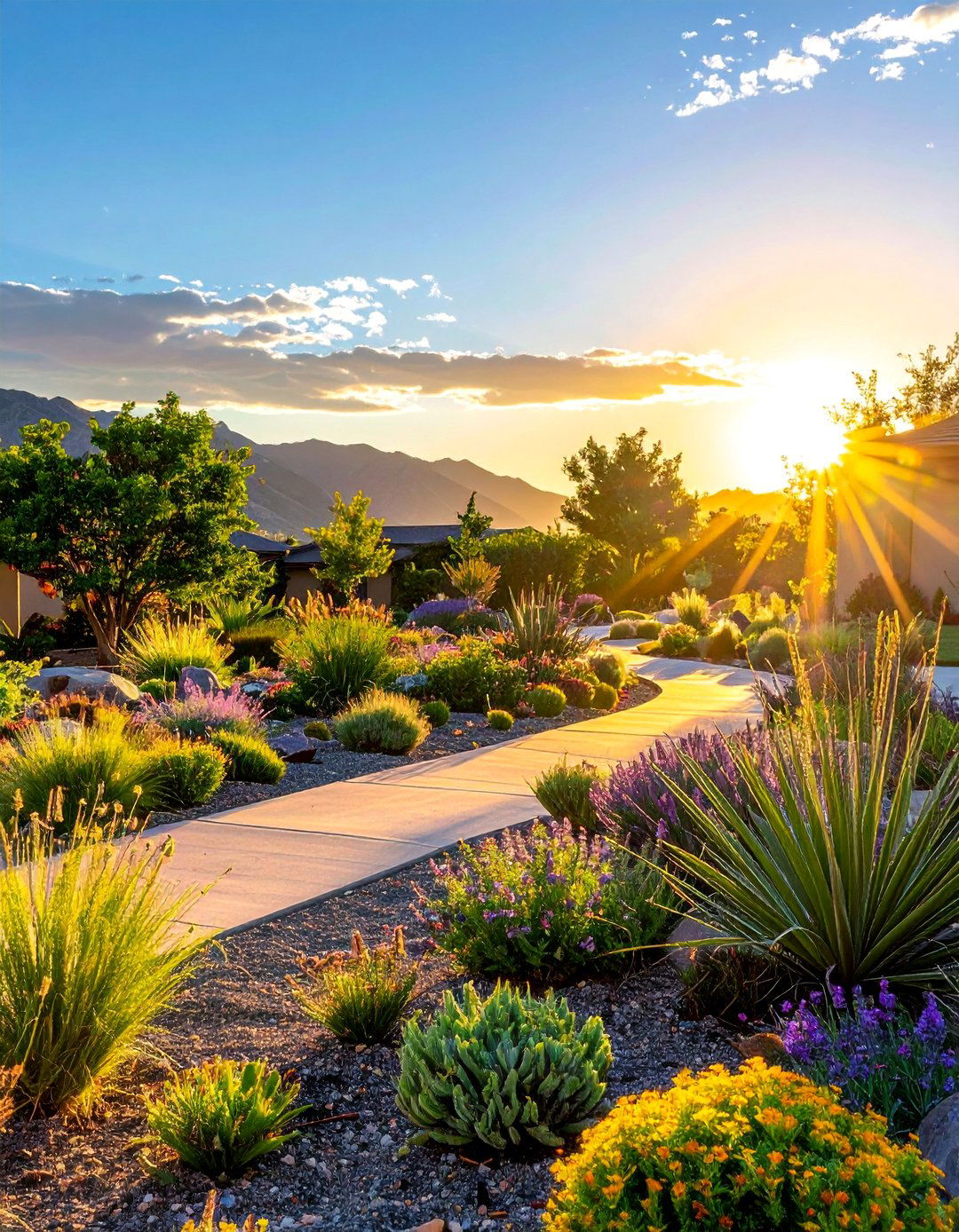
Are you making the most of the different growing conditions throughout your property? Microclimate management involves understanding and working with the various sun, shade, wind, and moisture conditions that exist in different areas of your landscape. South-facing slopes receive intense sun and heat, making them perfect for desert plants and mediterranean species. North-facing areas might support different drought-tolerant plants that prefer cooler conditions. Areas near buildings or under trees create microclimates with different moisture and temperature patterns. Wind exposure affects plant selection and watering needs. Understanding these variations allows you to place plants where they'll thrive with minimal inputs. This approach maximizes the success of your drought-tolerant plantings while creating diverse, interesting landscapes that take advantage of natural site conditions.
Conclusion:
Drought tolerant landscaping represents a fundamental shift toward sustainable garden design that works with natural systems rather than against them. These thirty ideas demonstrate that water conservation doesn't require sacrificing beauty, functionality, or enjoyment of outdoor spaces. From stunning succulent sculptures to flowing ornamental grass meadows, drought-tolerant gardens offer incredible diversity in style and application. The key lies in understanding your local climate, soil conditions, and microclimates, then selecting plants and design strategies that thrive in those specific conditions. As water becomes increasingly precious and climate patterns continue to change, these landscaping approaches will become essential tools for creating resilient, beautiful outdoor environments. By embracing drought-tolerant design principles, you're investing in landscapes that will remain stunning and sustainable for generations to come.


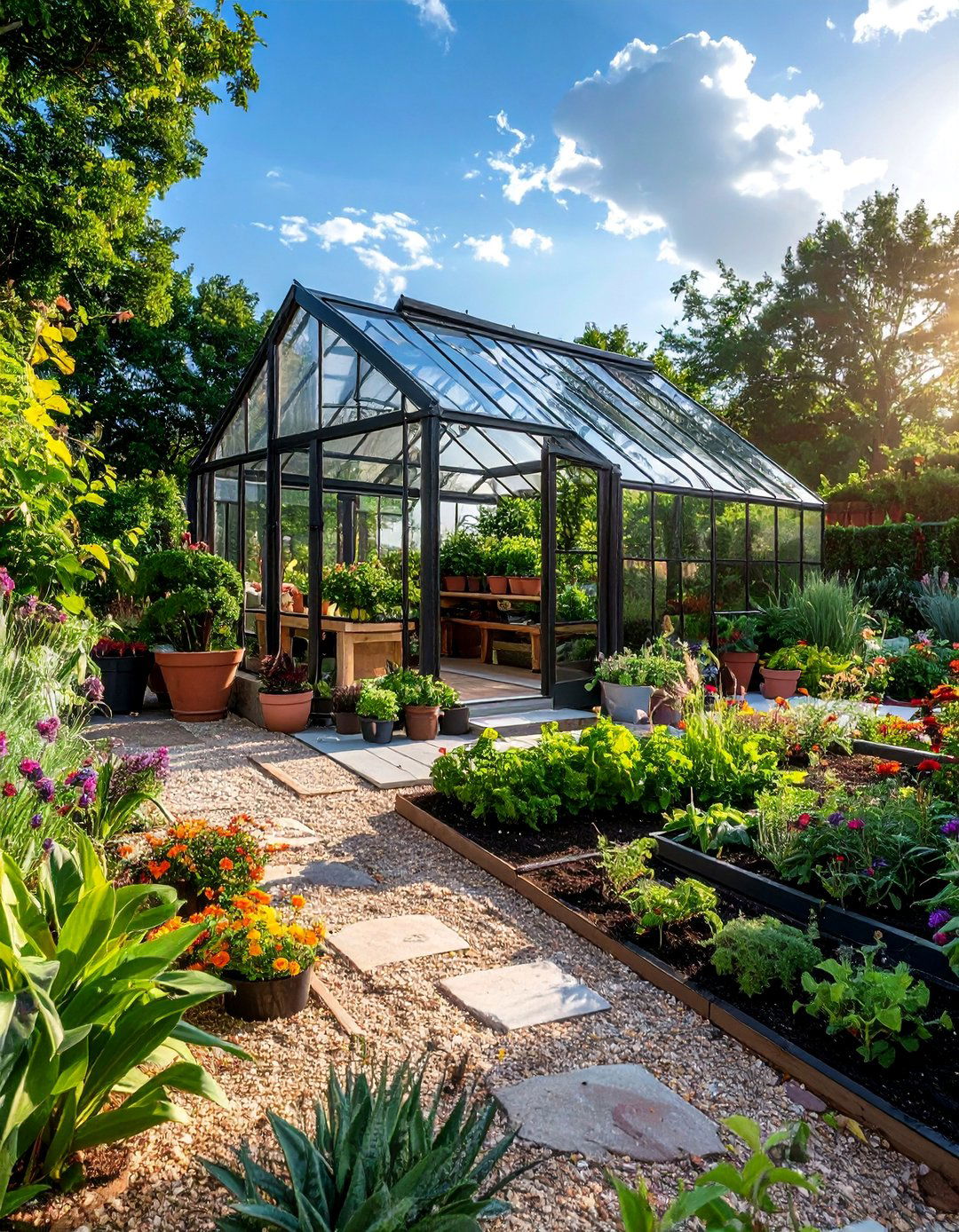
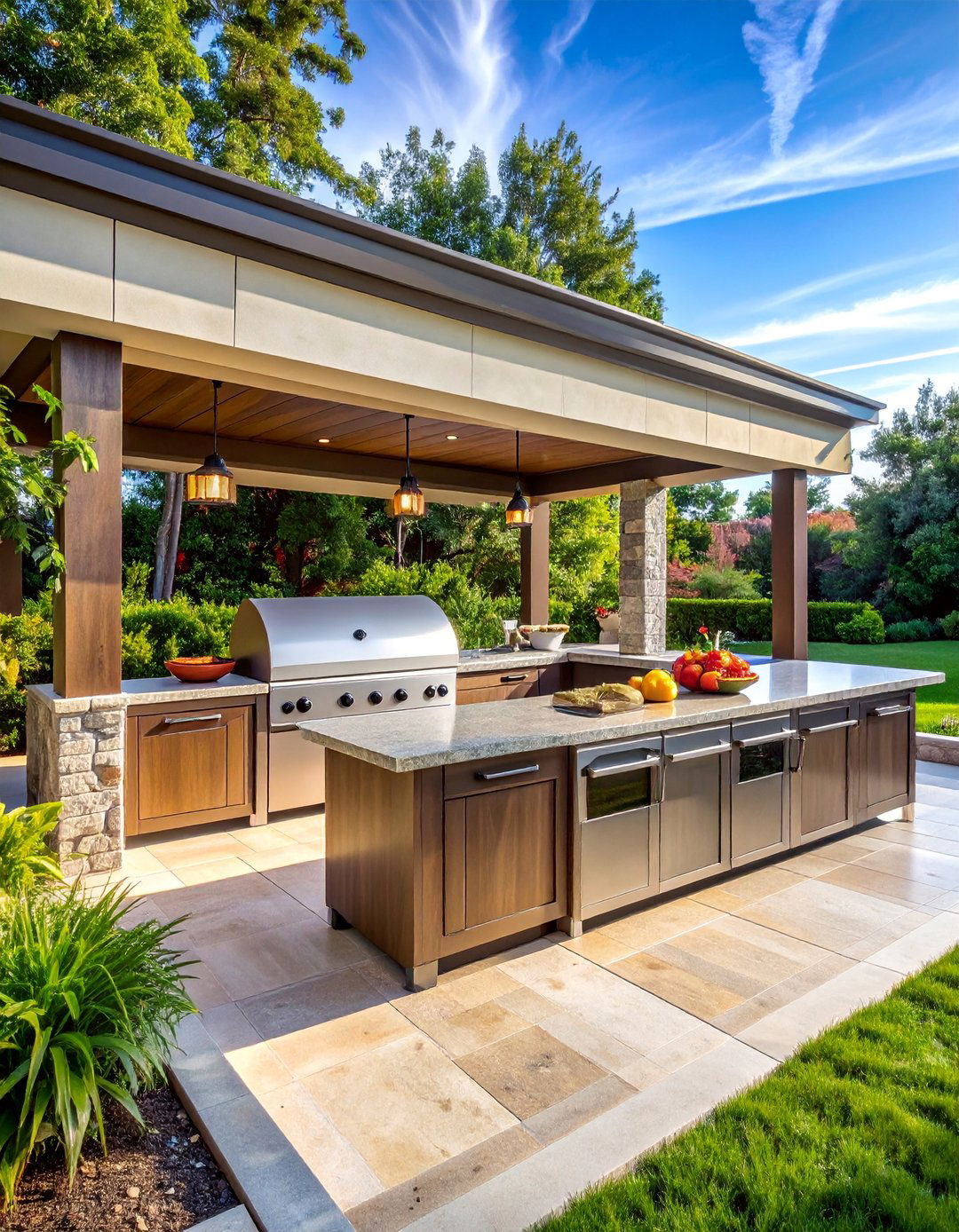
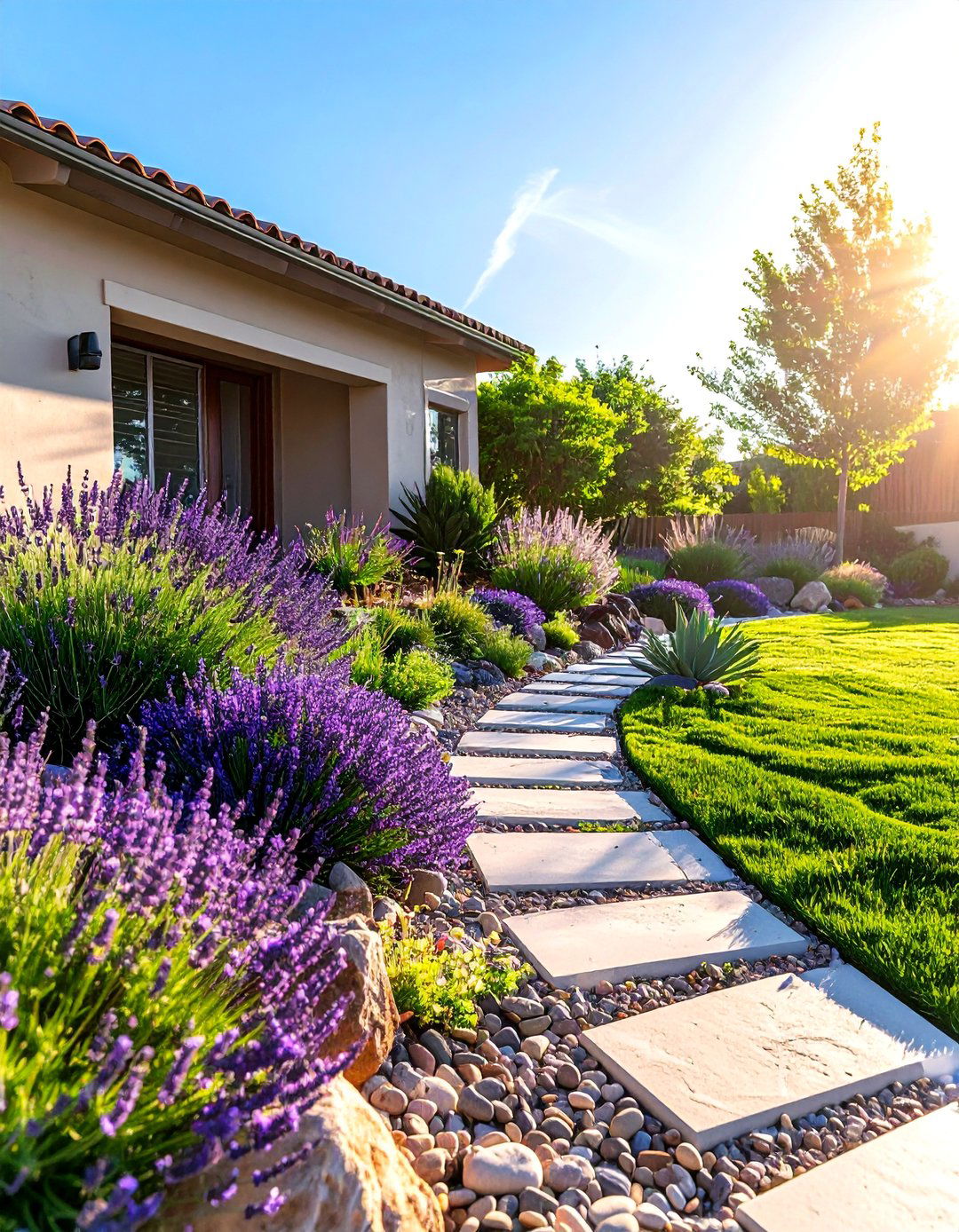
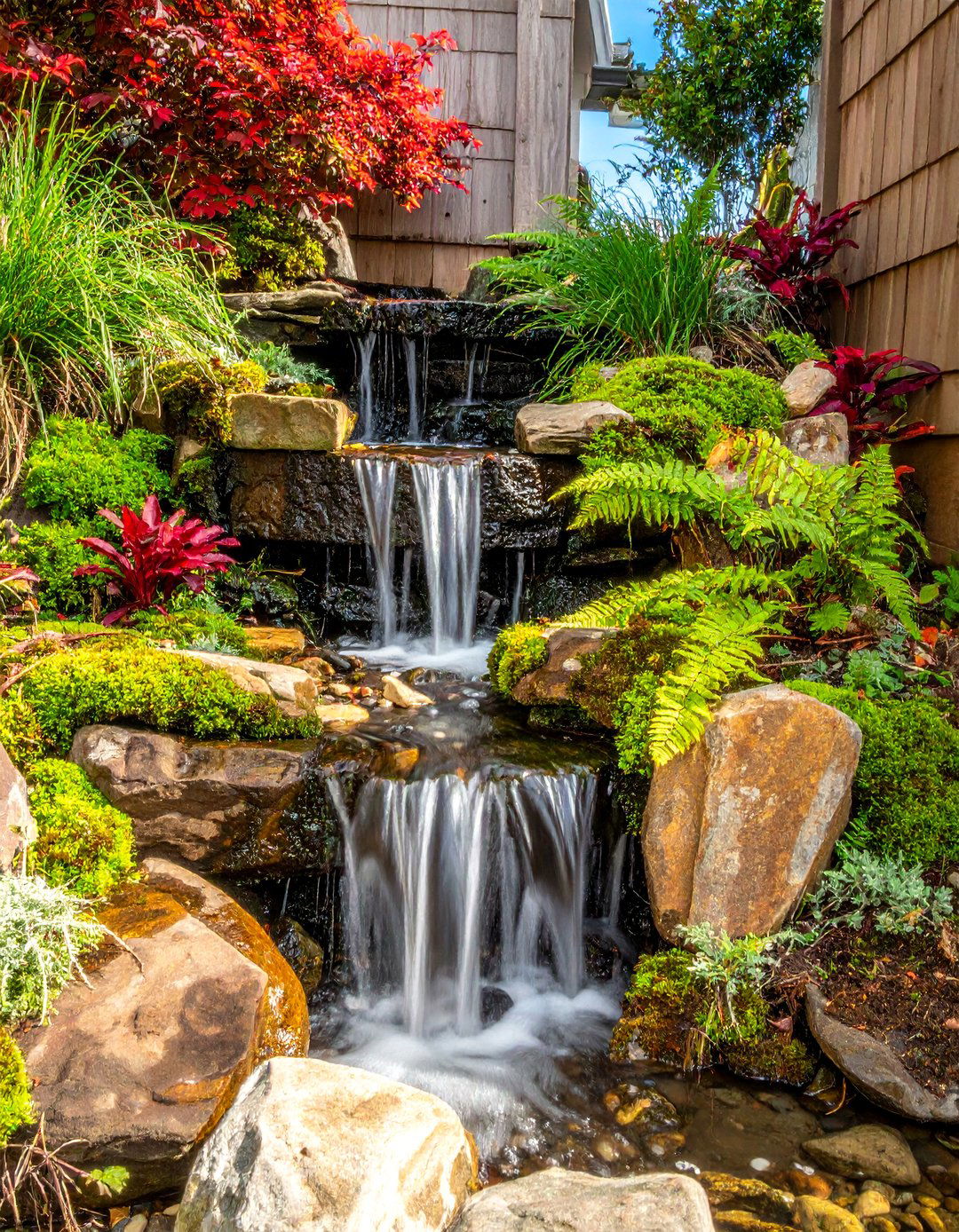

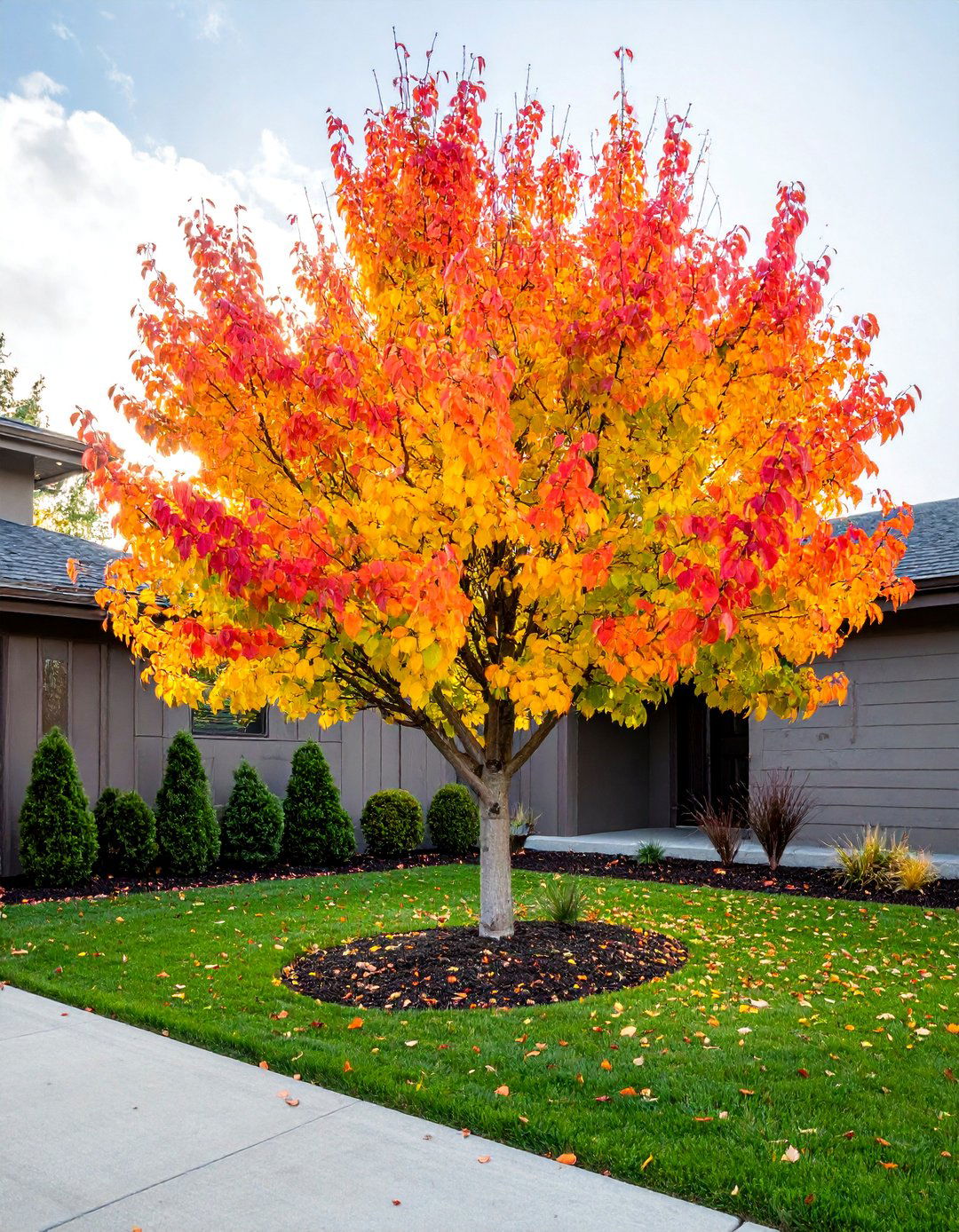
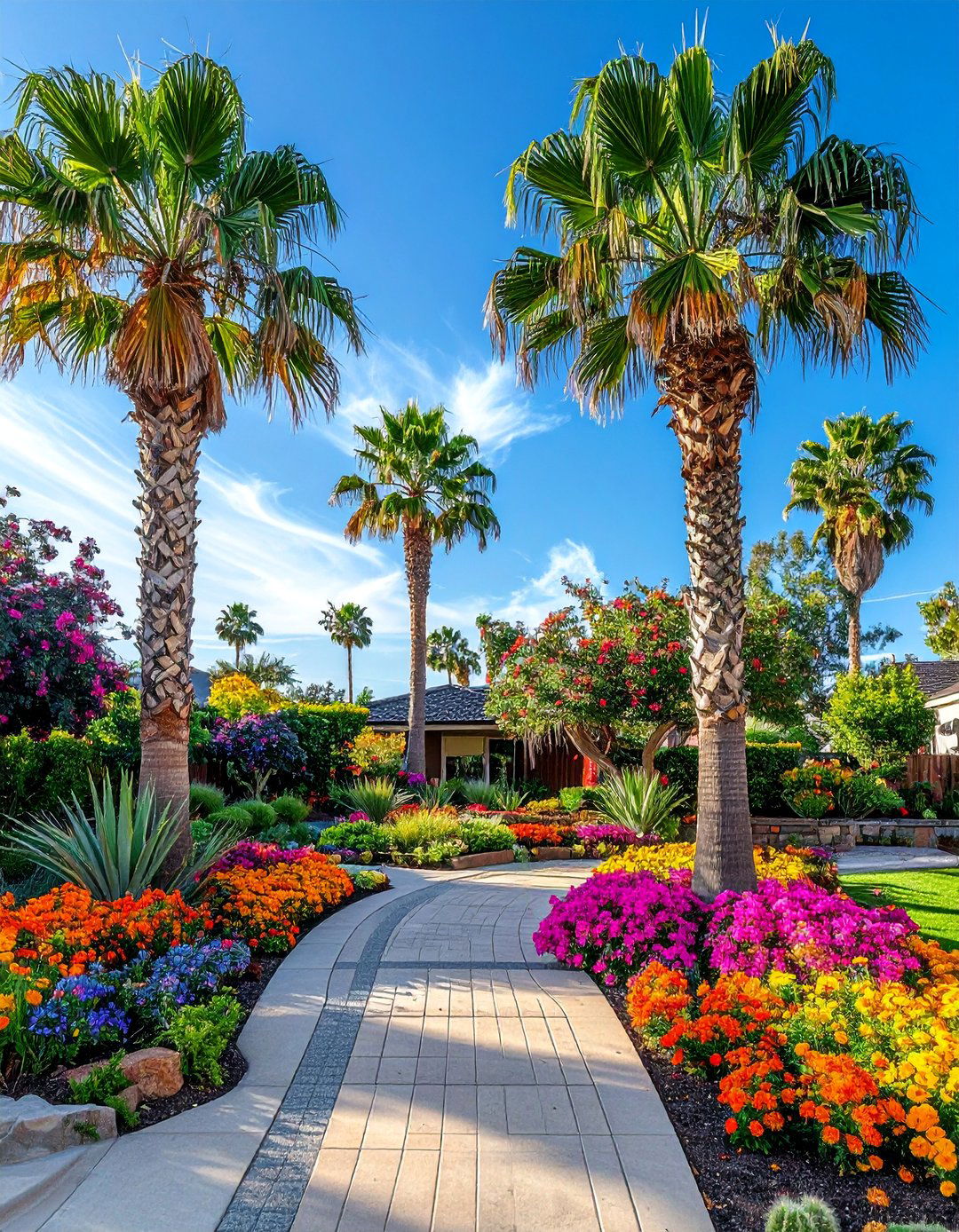
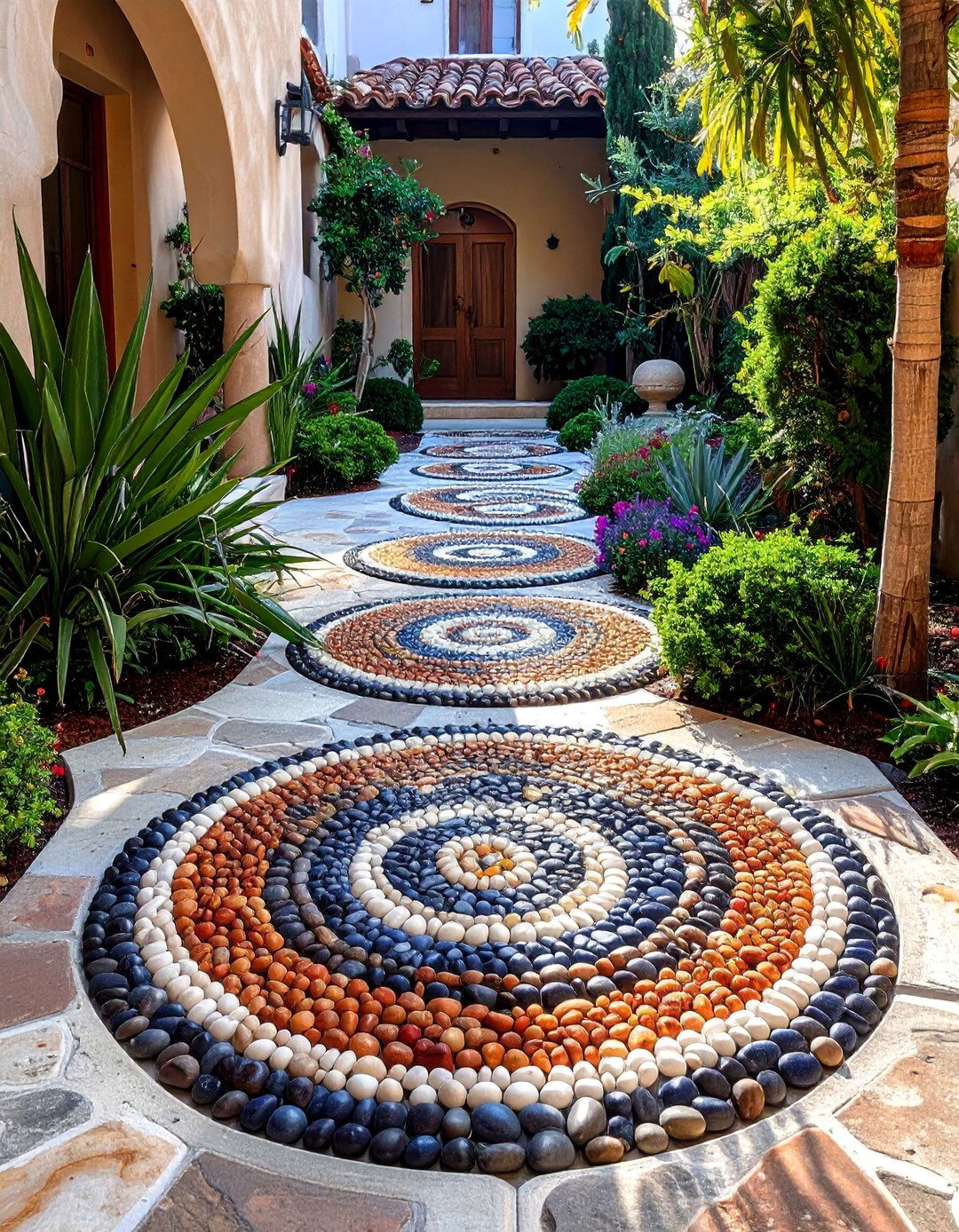


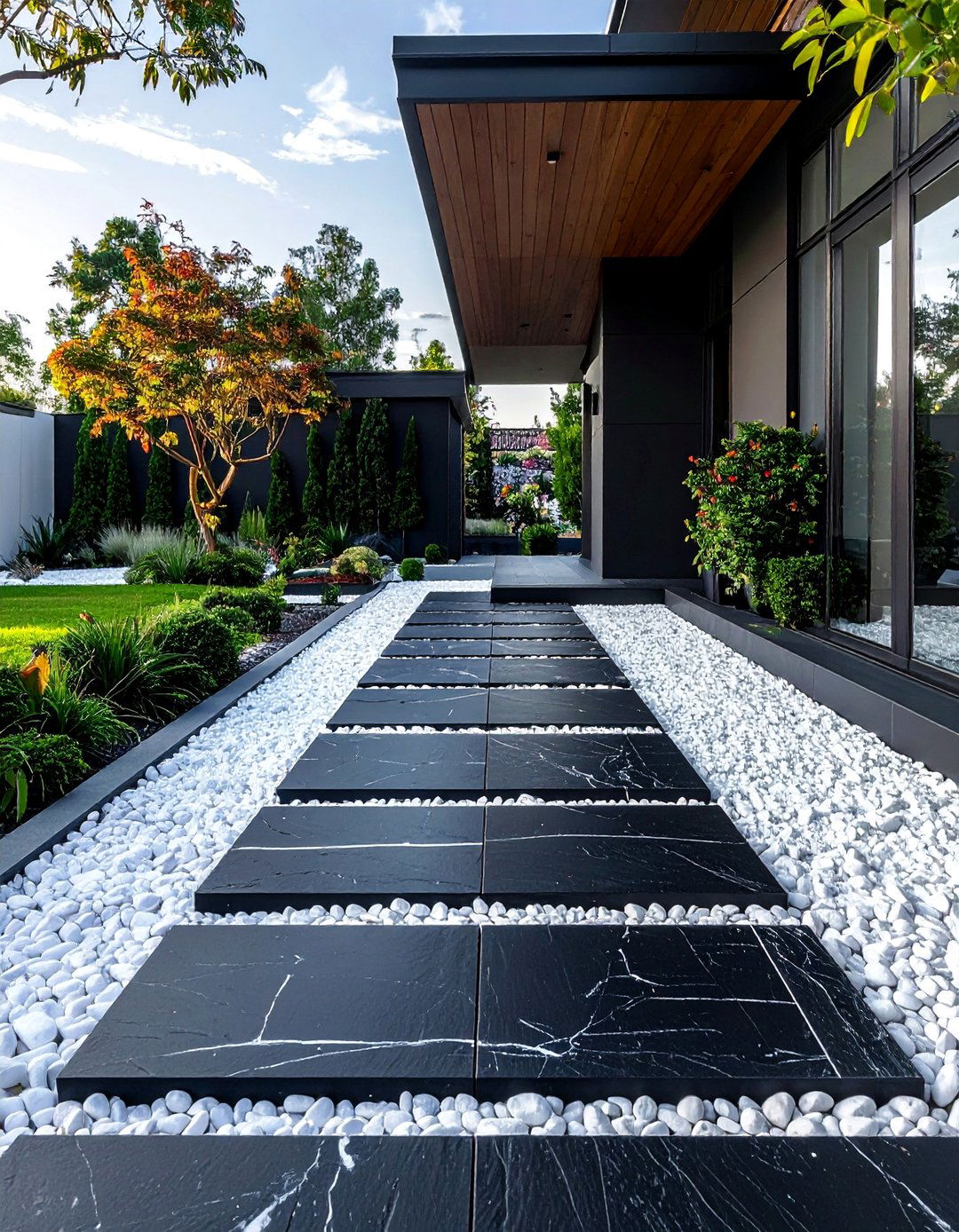
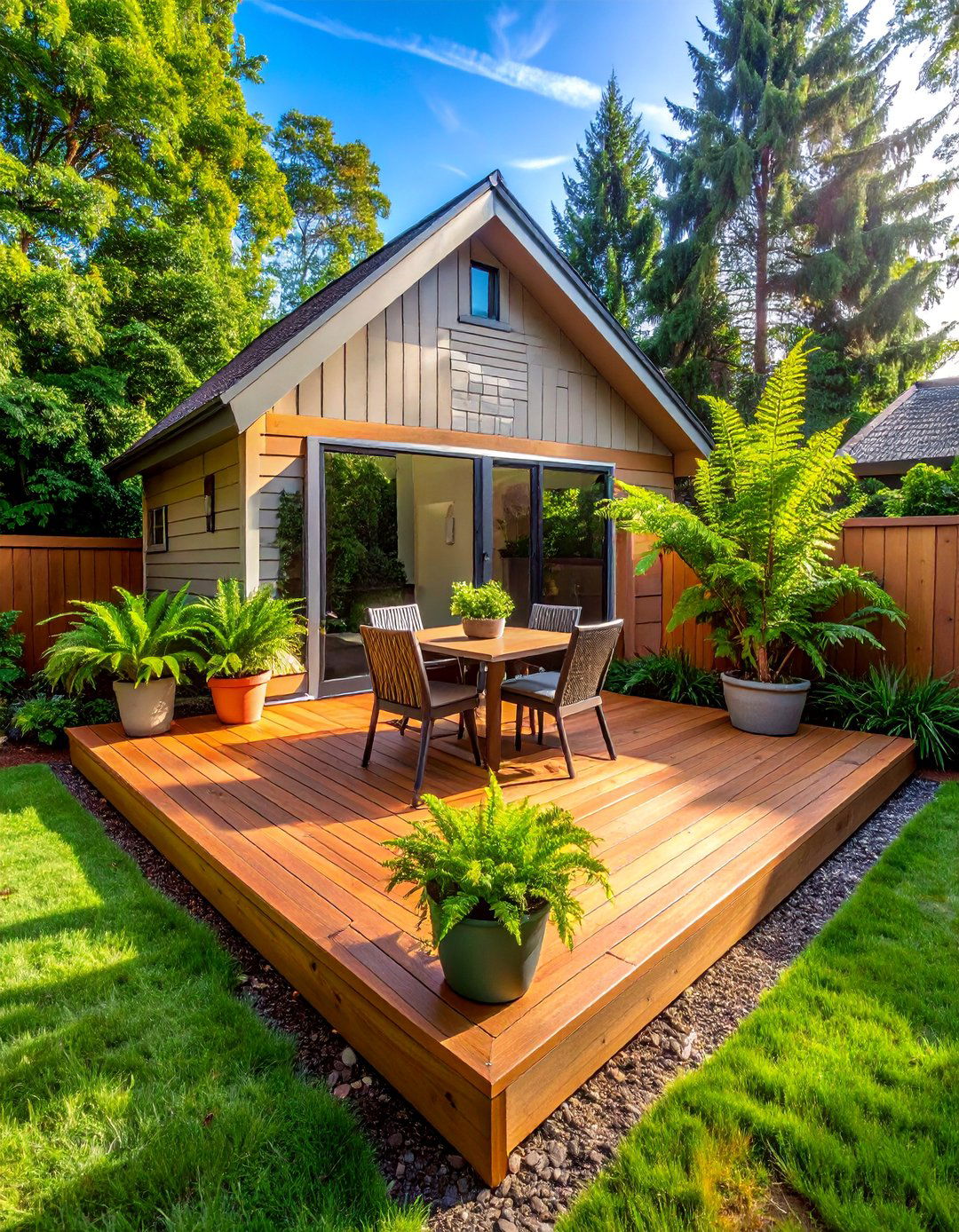
Leave a Reply